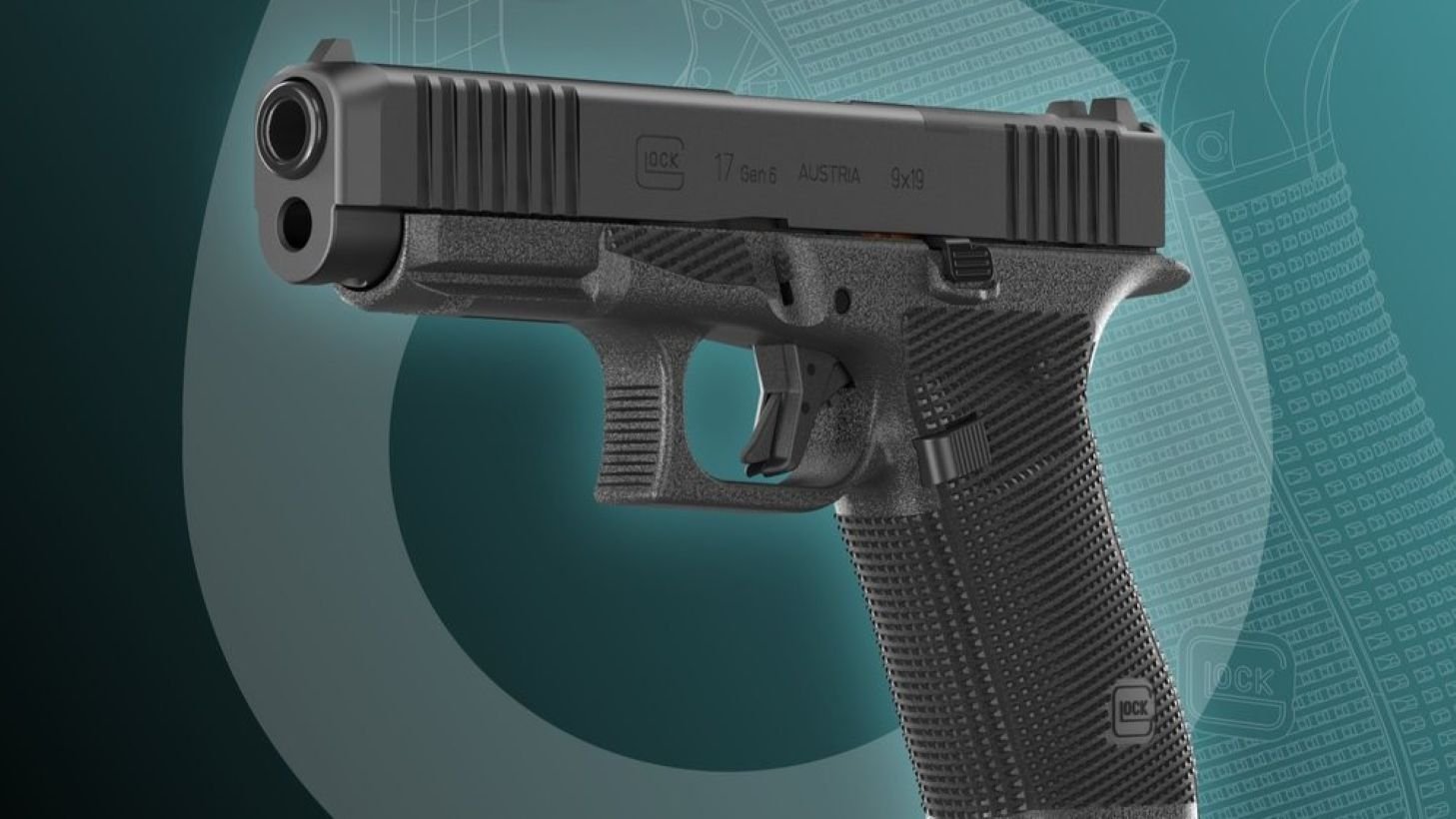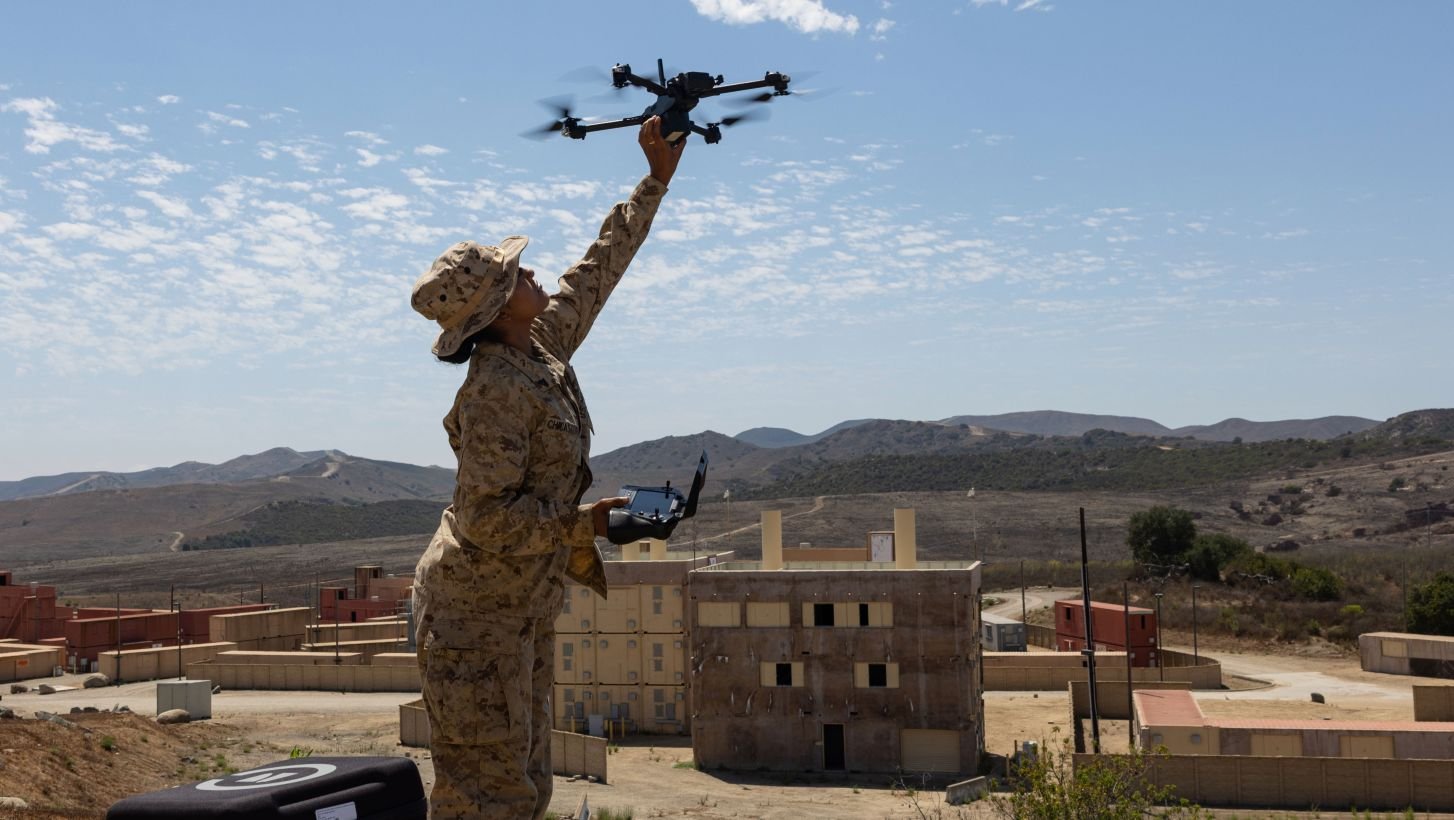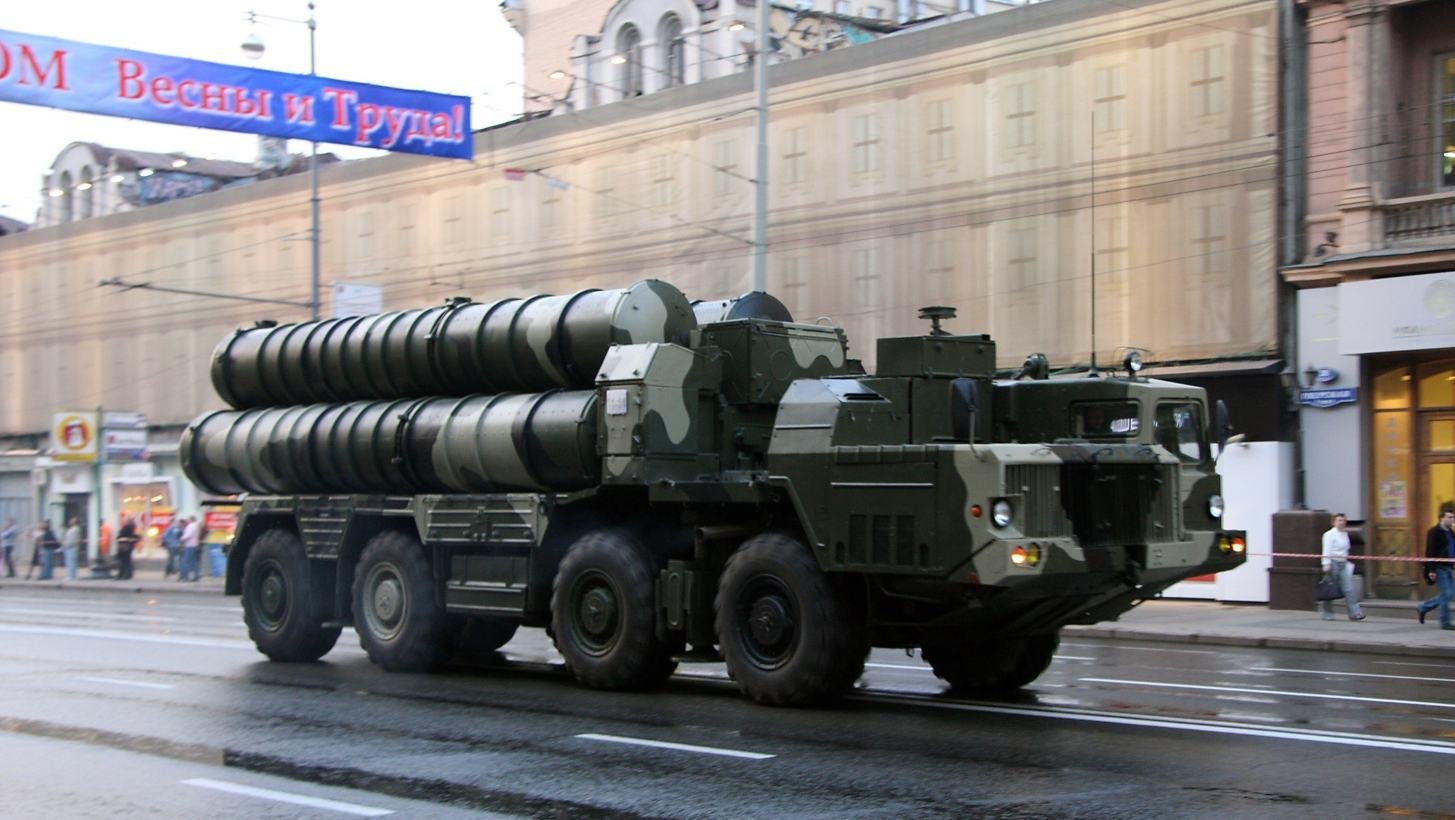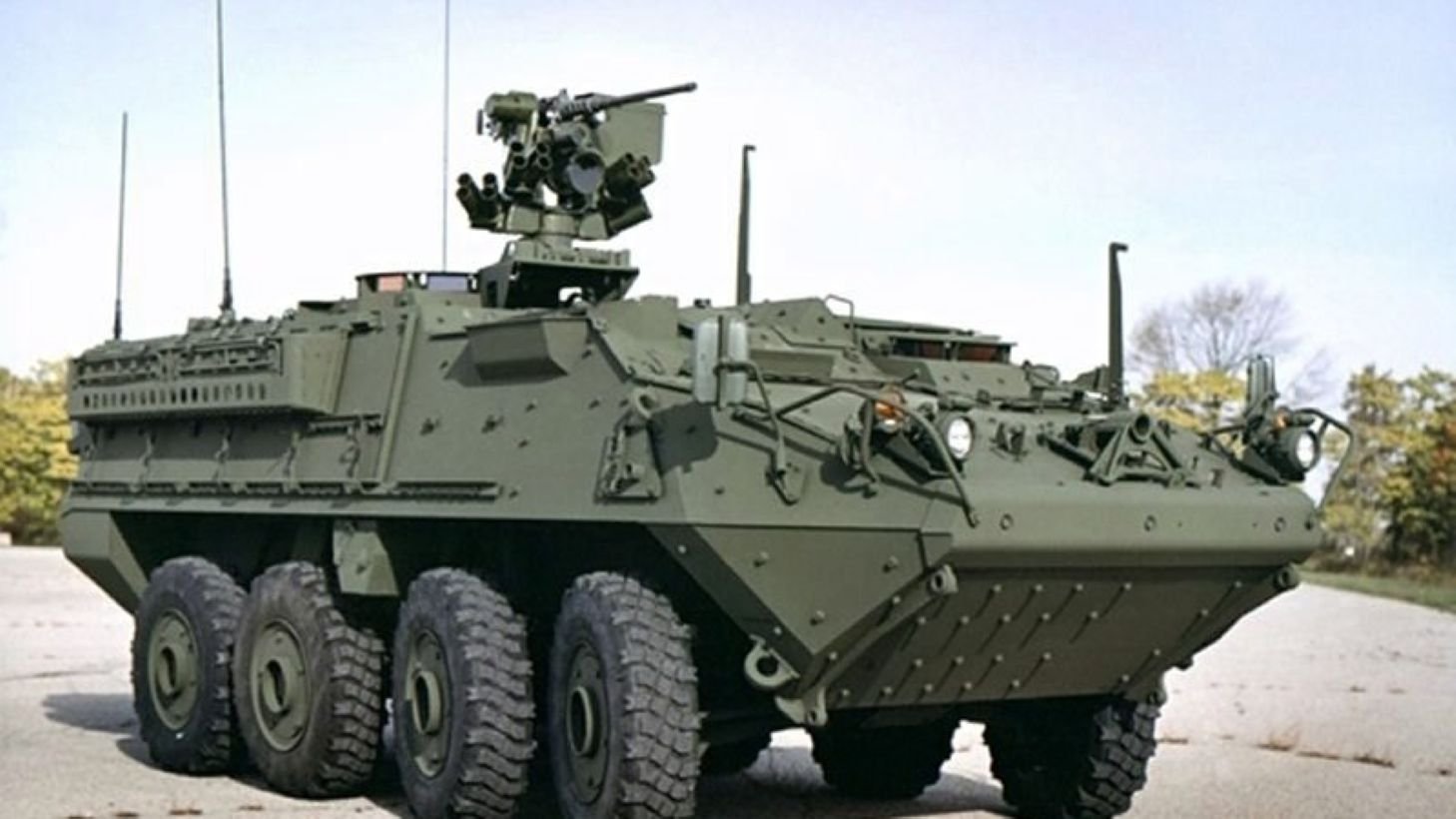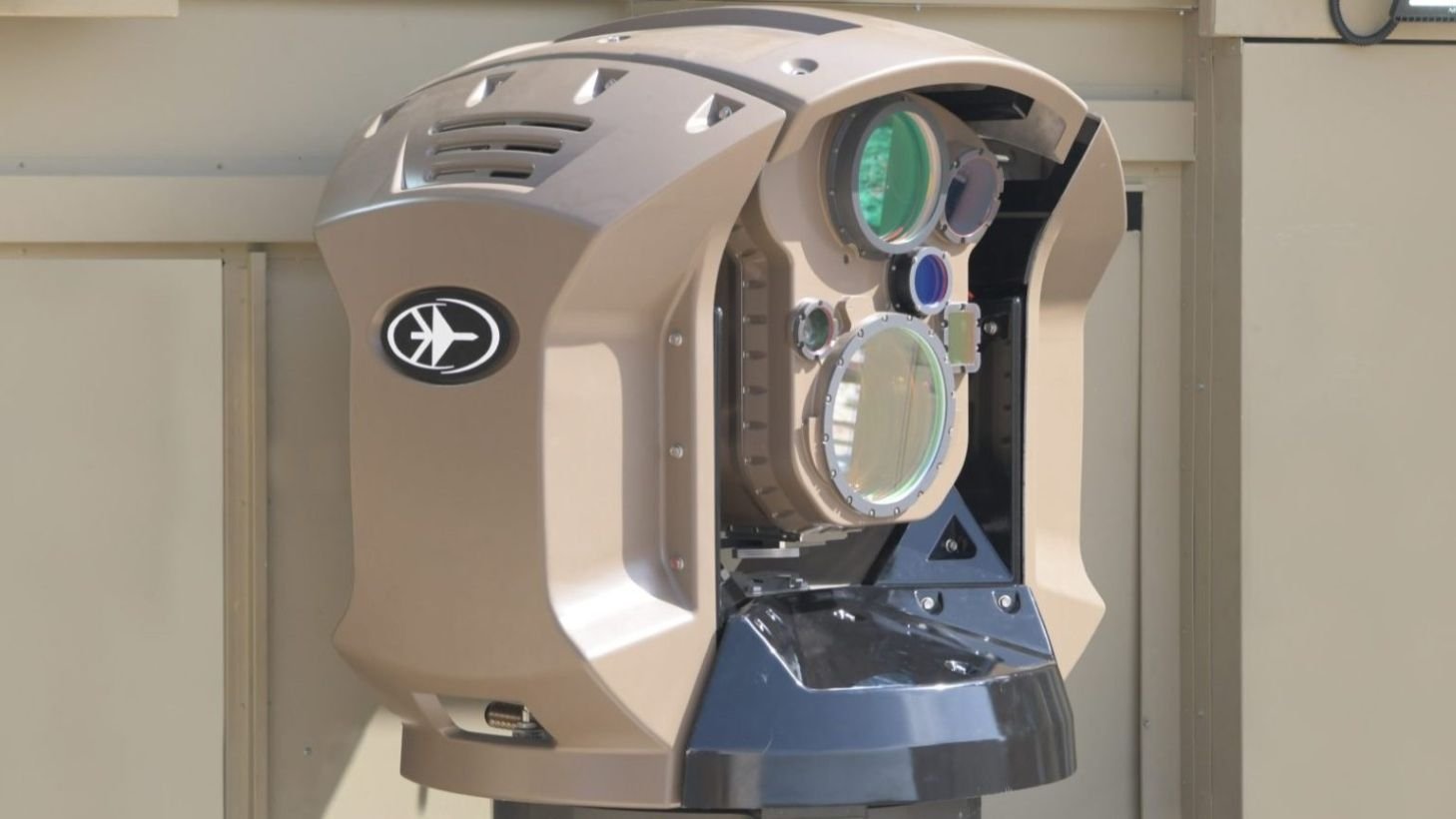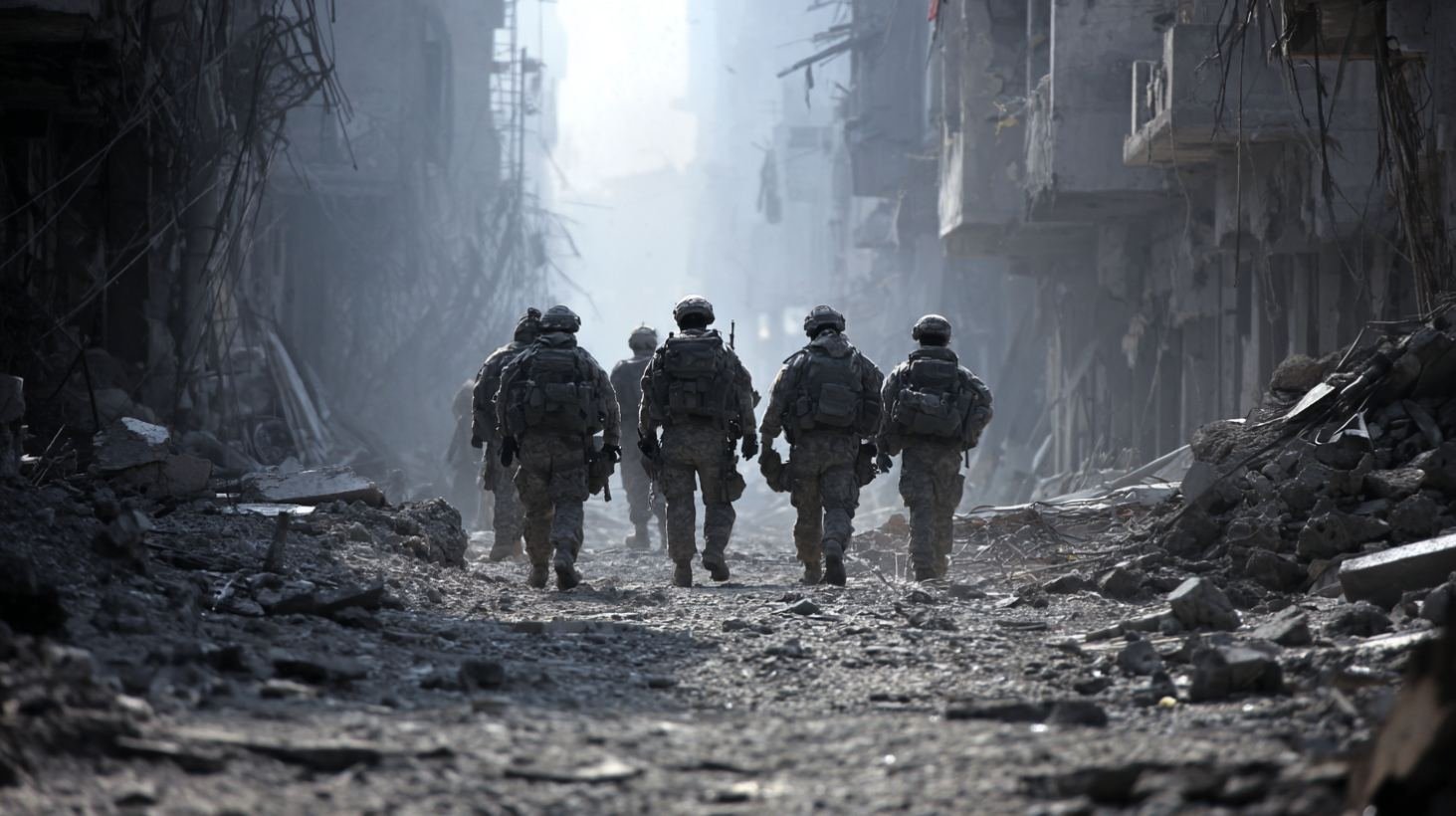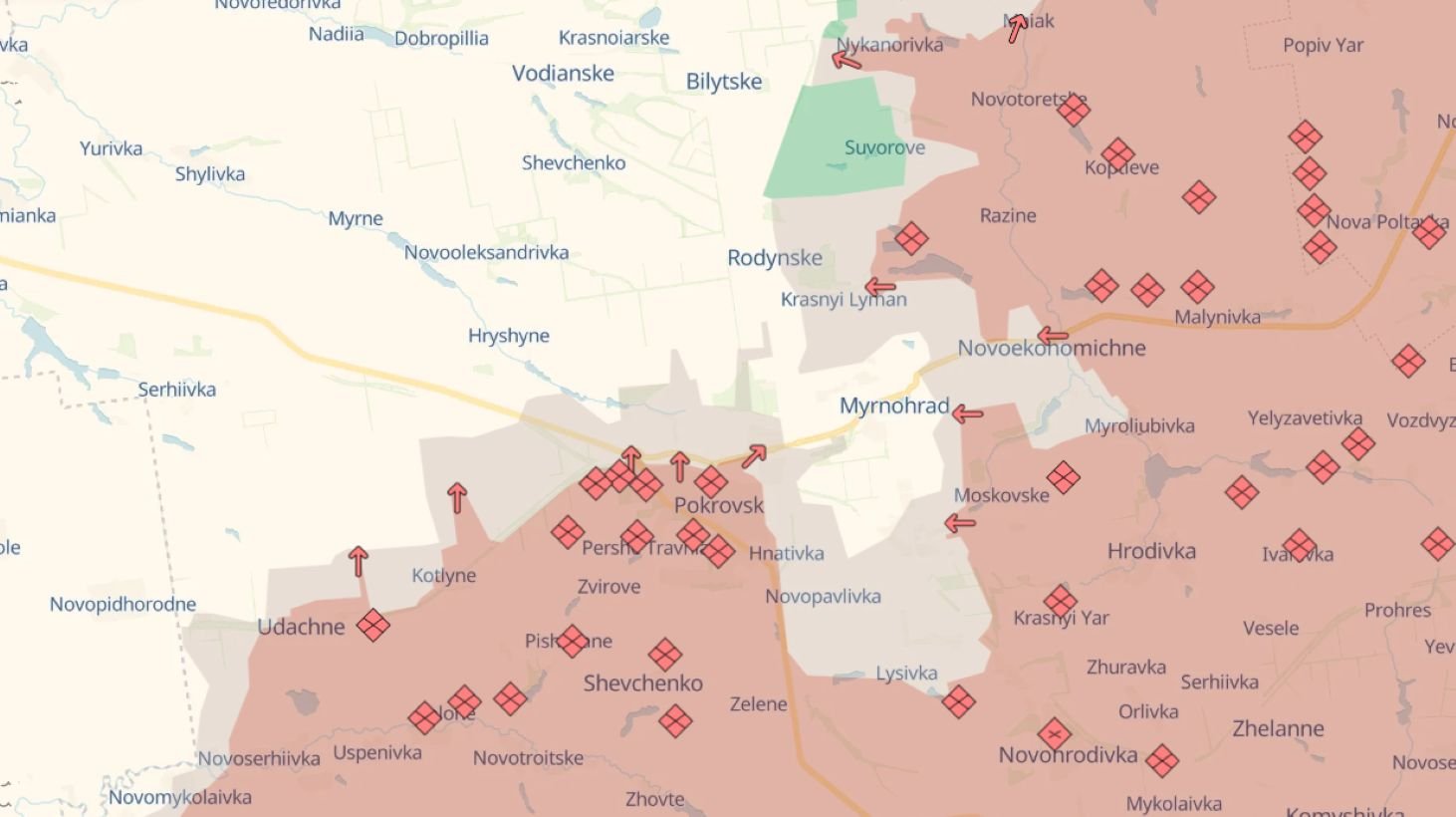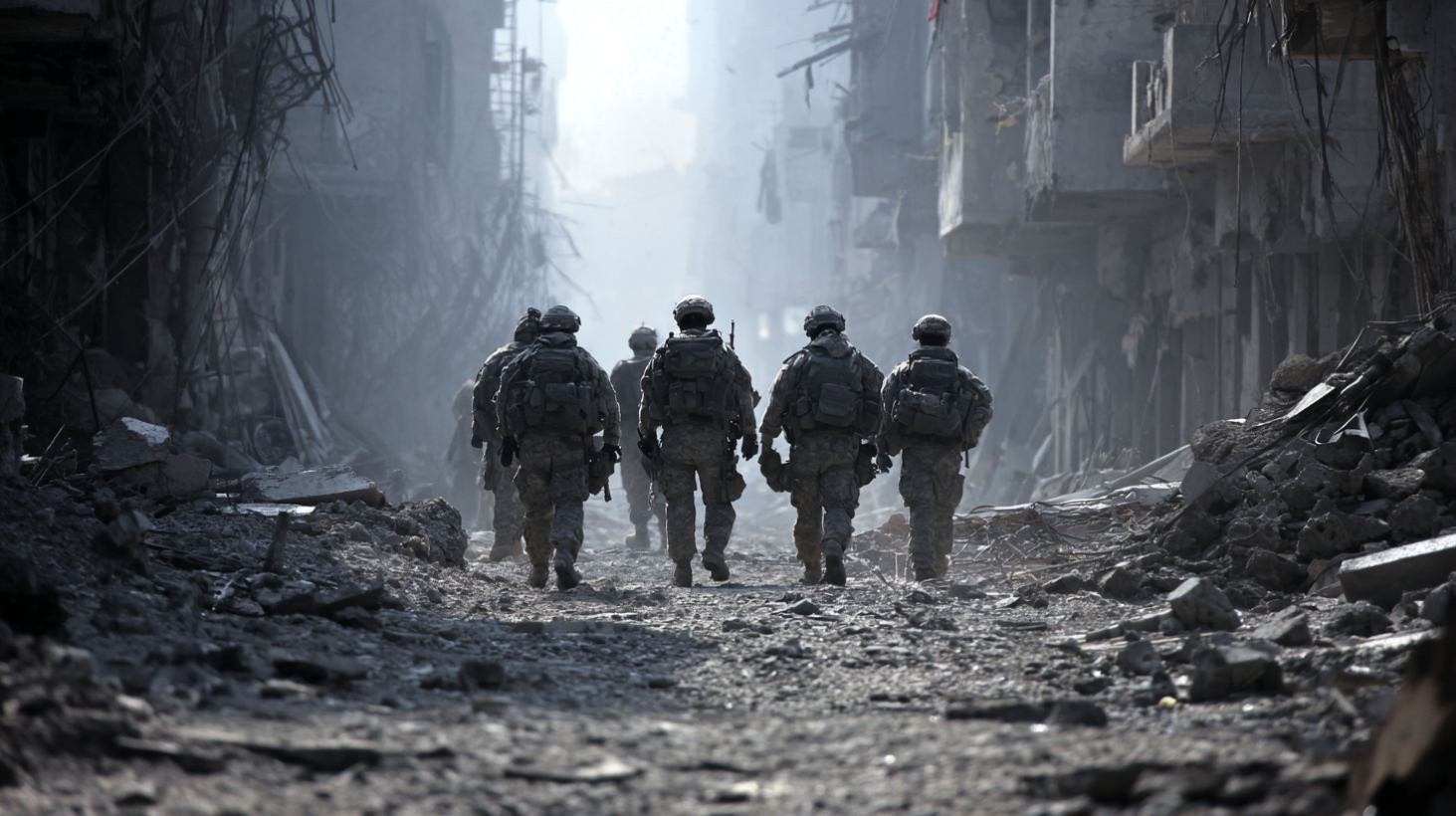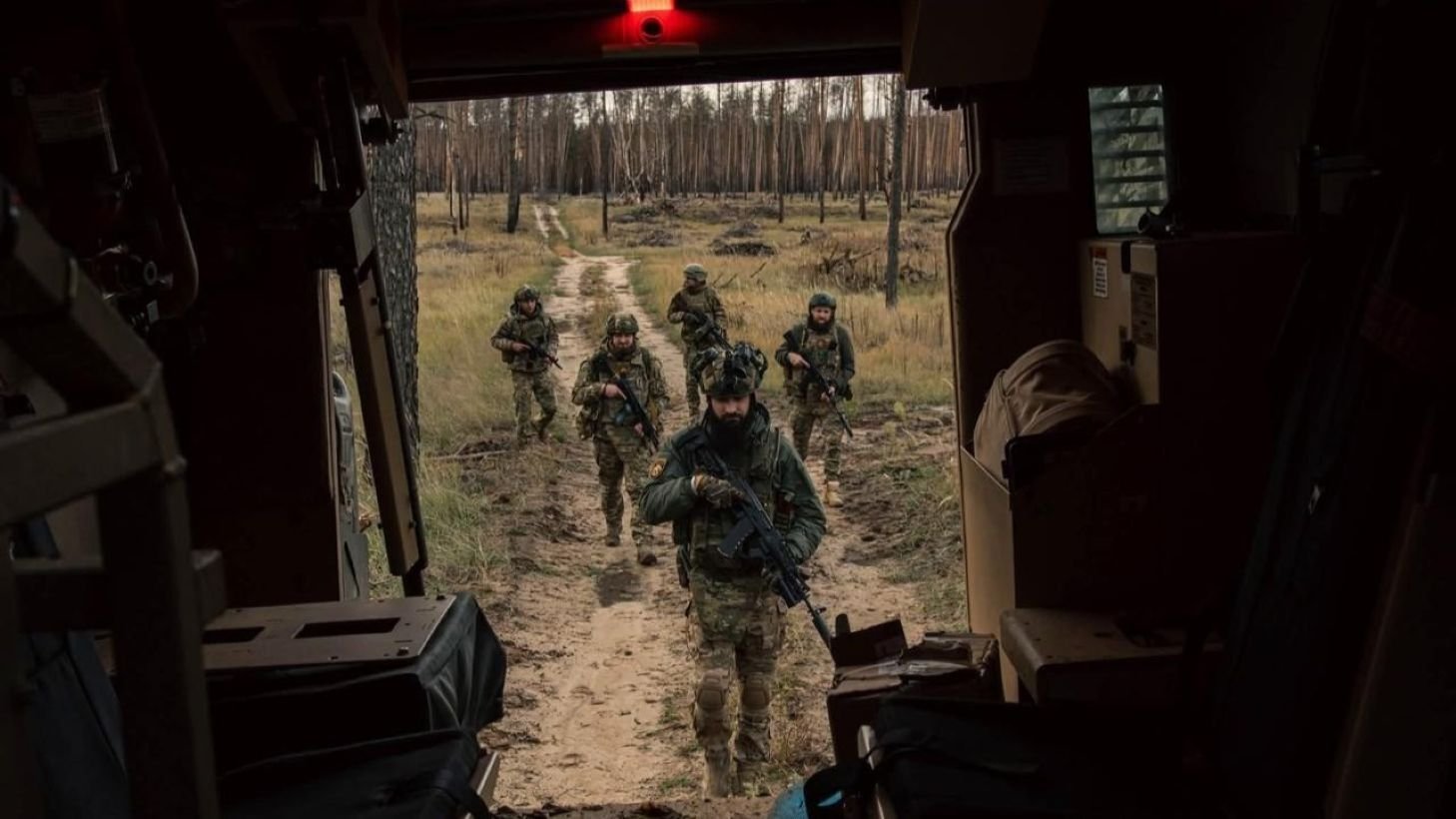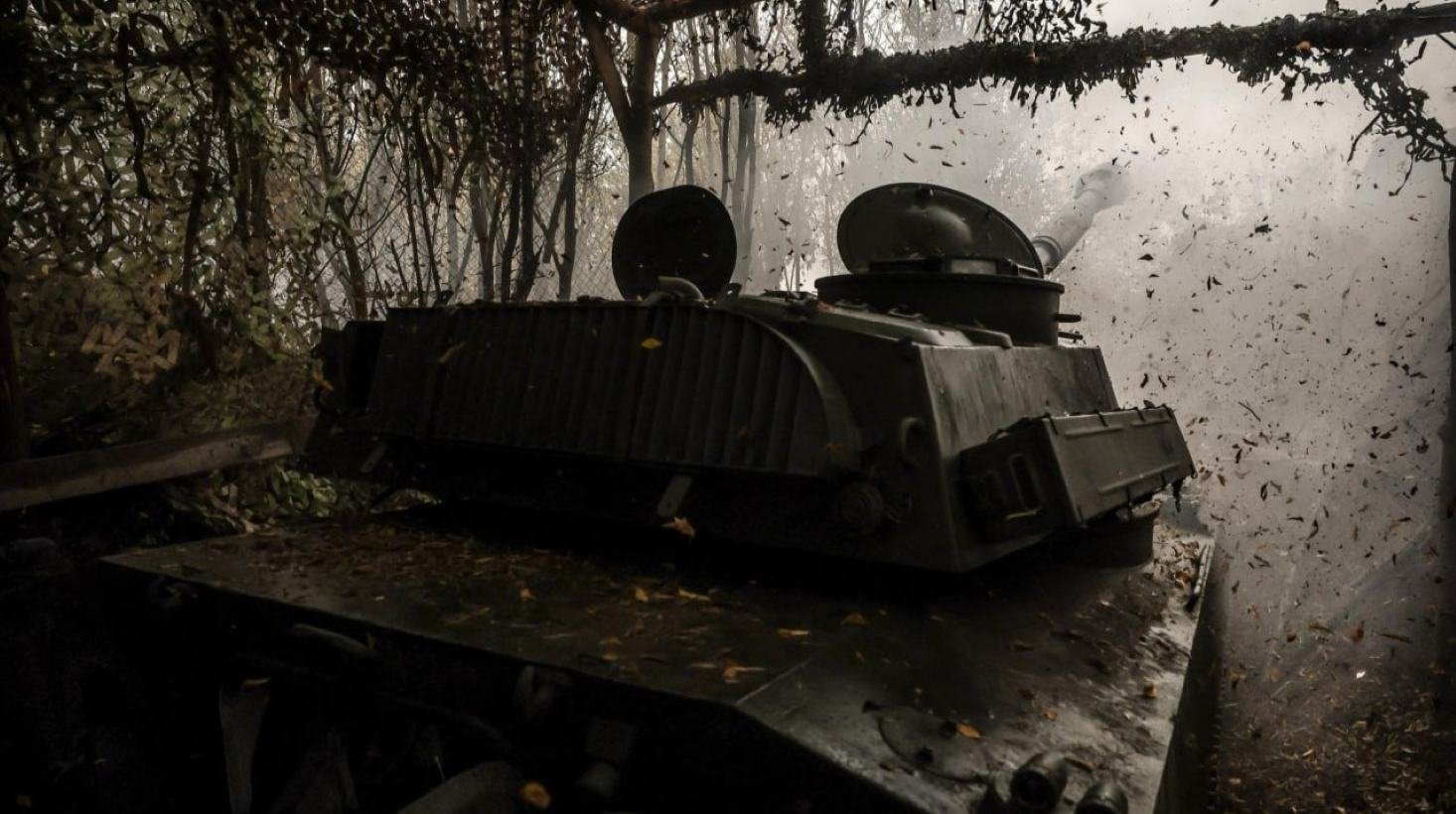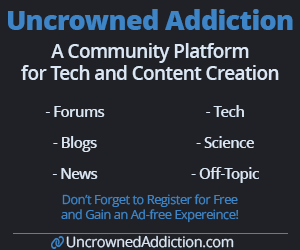-
Posts
773 -
Joined
-
Last visited
Content Type
Profiles
Uncrowned Armory News
Prepping Cookbook
Conspiracy Theories
Uncrowned Tactical Sports News
Prepping
Forums
Events
Everything posted by Uncrowned Guard
-

Glock Gen6 Pistols Launch with Enhanced Ergonomics and Optics Ready
Uncrowned Guard posted an article in Firearms
Glock Unveils Generation 6 Pistols With Focused Ergonomic Innovations Glock has formally announced the Generation 6 (Gen6) series, bringing significant ergonomic and functional upgrades to its flagship G17, G19, and G45 pistols. This trio of 9mm handguns is slated for dealer release on January 20th, 2026, with pricing unchanged from current Gen5 MOS offerings—a testament to Glock’s commitment to measured evolution over drastic reinvention. Incremental Improvements With User-Focused Design Echoing Glock’s evolutionary approach, CEO Carlos Guevara described Gen6 as “thoughtful progress,” emphasizing continuity over trend-chasing. The Gen6 launch addresses two major sets of user complaints: grip ergonomics and optics mounting. Glock resists the industry’s shift toward modular fire control units, instead preserving its proven one-piece frame while enhancing handling characteristics. The frame now includes a subtle palm swell, shaped using ergonomic mapping from Glock’s workforce. Two interchangeable backstraps (2mm and 4mm) are bundled, adjusting fit without separate beavertail inserts—the beavertail is now integrated into the frame. Texturing draws from RTF2 and RTF4 patterns, offering extended contact surfaces intended to improve purchase while remaining comfortable for all-day carry. The trigger guard has been recontoured for a higher grip, and a flared magazine well has been added, supporting swifter reloads. Ambidextrous “gas pedal” shelves—small protrusions accessible to either hand—enhance recoil control, marking a notable functional addition to Glock’s minimalist aesthetic. Front slide serrations are now deeper and steeper to aid manipulation. Trigger, Internal Mechanics, and Compatibility In a major design update, all Gen6 pistols feature a flat-faced trigger, paired with a reduced trigger reach and undercut trigger guard. These elements are engineered to facilitate a higher grip and accommodate shooters with smaller hands, all while maintaining the Safe Action system. Glock returns to a single captive recoil spring assembly. Gen6 barrels introduce new chamfering and internal geometry, making them incompatible with prior generations—restricting simple parts interchange. However, legacy Glock magazines remain compatible. Optics Mounting: An All-Inclusive Approach Departing from previous MOS (Modular Optic System) segmentation, every Gen6 pistol ships with optics-ready capability as standard. Each gun includes three polymer mounting plates for RMR and DPP footprints. These act like crush washers, absorbing recoil and allowing economical replacement, but it remains to be seen whether the polymer plates will maintain optical zero under prolonged use. Notably absent is the A-Cut mounting system developed with Aimpoint; further details may be forthcoming at major industry shows. Model Specifications G17 Gen6: - Full-size, 17+1 capacity - 7.95-inch overall length, 4.49-inch barrel - 680g loaded (approx. 23.99 oz) G19 Gen6: - Compact, 15+1 capacity - 7.28-inch overall length, 4.02-inch barrel - 640g loaded (approx. 22.58 oz) G45 Gen6: - Crossover, G19 slide with G17 frame, 17+1 capacity - 7.44-inch overall length, 4.02-inch barrel - 655g loaded (approx. 23.10 oz) All models incorporate hexagonal rifling, ambidextrous slide stop, reversible magazine catch, and a trigger pull of approximately 5.8 lbs. Unanswered Questions and Early Analysis The Gen6 rollout is limited to three 9mm models; further expansion to other calibers and sizes remains unannounced. Long-term durability of the new grip texture and polymer optic plates is unproven, pending field testing. The anti-auto switch features from Glock’s V series are now standard, but the fate of the A-Cut optics interface is unresolved. Conclusion: Measured Innovation from an Industry Standard Gen6 reflects Glock’s methodical philosophy—pragmatic refinement tailored to shooter feedback, not wholesale reinvention. Meaningful ergonomic upgrades, universal optics readiness, and internal tweaks further cement Glock’s enduring market dominance. Availability is set for January 20th, 2026, with no MSRP increase.-
- news
- product launch
-
(and 2 more)
Tagged with:
-
Glock Unveils Generation 6 Pistols With Focused Ergonomic Innovations Glock has formally announced the Generation 6 (Gen6) series, bringing significant ergonomic and functional upgrades to its flagship G17, G19, and G45 pistols. This trio of 9mm handguns is slated for dealer release on January 20th, 2026, with pricing unchanged from current Gen5 MOS offerings—a testament to Glock’s commitment to measured evolution over drastic reinvention. Incremental Improvements With User-Focused Design Echoing Glock’s evolutionary approach, CEO Carlos Guevara described Gen6 as “thoughtful progress,” emphasizing continuity over trend-chasing. The Gen6 launch addresses two major sets of user complaints: grip ergonomics and optics mounting. Glock resists the industry’s shift toward modular fire control units, instead preserving its proven one-piece frame while enhancing handling characteristics. The frame now includes a subtle palm swell, shaped using ergonomic mapping from Glock’s workforce. Two interchangeable backstraps (2mm and 4mm) are bundled, adjusting fit without separate beavertail inserts—the beavertail is now integrated into the frame. Texturing draws from RTF2 and RTF4 patterns, offering extended contact surfaces intended to improve purchase while remaining comfortable for all-day carry. The trigger guard has been recontoured for a higher grip, and a flared magazine well has been added, supporting swifter reloads. Ambidextrous “gas pedal” shelves—small protrusions accessible to either hand—enhance recoil control, marking a notable functional addition to Glock’s minimalist aesthetic. Front slide serrations are now deeper and steeper to aid manipulation. Trigger, Internal Mechanics, and Compatibility In a major design update, all Gen6 pistols feature a flat-faced trigger, paired with a reduced trigger reach and undercut trigger guard. These elements are engineered to facilitate a higher grip and accommodate shooters with smaller hands, all while maintaining the Safe Action system. Glock returns to a single captive recoil spring assembly. Gen6 barrels introduce new chamfering and internal geometry, making them incompatible with prior generations—restricting simple parts interchange. However, legacy Glock magazines remain compatible. Optics Mounting: An All-Inclusive Approach Departing from previous MOS (Modular Optic System) segmentation, every Gen6 pistol ships with optics-ready capability as standard. Each gun includes three polymer mounting plates for RMR and DPP footprints. These act like crush washers, absorbing recoil and allowing economical replacement, but it remains to be seen whether the polymer plates will maintain optical zero under prolonged use. Notably absent is the A-Cut mounting system developed with Aimpoint; further details may be forthcoming at major industry shows. Model Specifications G17 Gen6: - Full-size, 17+1 capacity - 7.95-inch overall length, 4.49-inch barrel - 680g loaded (approx. 23.99 oz) G19 Gen6: - Compact, 15+1 capacity - 7.28-inch overall length, 4.02-inch barrel - 640g loaded (approx. 22.58 oz) G45 Gen6: - Crossover, G19 slide with G17 frame, 17+1 capacity - 7.44-inch overall length, 4.02-inch barrel - 655g loaded (approx. 23.10 oz) All models incorporate hexagonal rifling, ambidextrous slide stop, reversible magazine catch, and a trigger pull of approximately 5.8 lbs. Unanswered Questions and Early Analysis The Gen6 rollout is limited to three 9mm models; further expansion to other calibers and sizes remains unannounced. Long-term durability of the new grip texture and polymer optic plates is unproven, pending field testing. The anti-auto switch features from Glock’s V series are now standard, but the fate of the A-Cut optics interface is unresolved. Conclusion: Measured Innovation from an Industry Standard Gen6 reflects Glock’s methodical philosophy—pragmatic refinement tailored to shooter feedback, not wholesale reinvention. Meaningful ergonomic upgrades, universal optics readiness, and internal tweaks further cement Glock’s enduring market dominance. Availability is set for January 20th, 2026, with no MSRP increase. View full article
-
- news
- product launch
-
(and 2 more)
Tagged with:
-
U.S. War Department Unveils Ambitious Drone Procurement Drive The U.S. War Department has initiated a groundbreaking effort to acquire over 300,000 combat-capable drones. Framed as the centerpiece of President Donald J. Trump’s Drone Dominance Plan, this sweeping initiative seeks to redefine how the United States approaches modern warfare. The program reflects lessons from current conflicts and aims to position the U.S. military at the forefront of emergent unmanned capabilities. Executive Direction and Program Structure Announced on December 2, the initiative is rooted in President Trump’s “Unleashing American Drone Dominance” executive order. The order mandates an immediate acceleration in drone procurement to address both existing and anticipated peer threats. A $1 billion initial funding package supports procurement and rapid fielding, targeting more than 340,000 small, expendable attack drones within the next two years. The effort will proceed in four defined phases, or “gauntlets,” with the first phase launching in February 2026. Twelve manufacturers are slated to produce 30,000 expendable drones at roughly $5,000 each. By the final phase in 2027, production will consolidate to five vendors and scale up to 150,000 drones at approximately $2,300 per unit. This staged approach is designed to both spur industry innovation and maximize efficiency. Lessons from Modern Conflict The genesis of this drone surge lies in operational analysis from theaters such as Ukraine, where affordable, mass-produced drones have shifted the balance of power on the battlefield. Conflicts increasingly feature drone swarms that neutralize armored vehicles, disrupt logistics, and overwhelm traditional defenses. U.S. defense analysts point to the effectiveness of commercially adapted loitering drones—capable of both surveillance and direct attack—in modern peer-to-peer fighting. Traditional U.S. platforms like the MQ-9 Reaper, while advanced, are not suited for high-volume engagements where low-cost drones saturate the battlespace. Current U.S. air defense systems also face challenges when forced to counter large numbers of inexpensive aerial threats, undermining both cost-effectiveness and readiness. Strategic and Tactical Implications The Drone Dominance initiative is designed to offset these vulnerabilities. By embedding drone operations into Army, Marine Corps, and Special Operations units, the War Department aims to enable drone-driven tactics such as persistent surveillance, saturation strike operations, and independent maneuver by dispersed formations. These drones will be integral weapons for frontline forces, operated by small units and mechanized teams alike. At the strategic level, the program seeks to reduce reliance on legacy defense contractors and encourage domestic drone innovation. Accelerated procurement channels and regulatory adjustments are intended to foster a more resilient supply base and ensure that the military can adapt rapidly to evolving threats. Implementation also includes a doctrinal shift: beginning in 2026, drone warfare will become a core component of all major combat training rotations. This marks a force-wide transition to integrating autonomous and semi-autonomous capabilities at every echelon. Responding to Global Trends The international security landscape is witnessing a rapid proliferation of drone technology, with state actors such as China, Iran, and Russia demonstrating increasingly sophisticated swarm capabilities. The U.S. initiative thus represents both a response to these developments and a preemptive strategy to regain quantitative and qualitative advantages in unmanned warfare. By prioritizing scalable production and operational flexibility, the United States aims to dominate contested airspace and support distributed operations—where drone saturation, rather than troop concentrations, creates tactical overmatch. Outlook If the plan succeeds, the U.S. military is expected to field a vast, agile inventory of combat drones by 2027, reshaping doctrines around affordable, massed unmanned strike power. The initiative reflects a sober assessment of contemporary threats and a commitment to maintaining battlefield relevance amid rapidly evolving technologies and adversary capabilities.
-
- u.s.
- military branches
-
(and 2 more)
Tagged with:
-
U.S. War Department Unveils Ambitious Drone Procurement Drive The U.S. War Department has initiated a groundbreaking effort to acquire over 300,000 combat-capable drones. Framed as the centerpiece of President Donald J. Trump’s Drone Dominance Plan, this sweeping initiative seeks to redefine how the United States approaches modern warfare. The program reflects lessons from current conflicts and aims to position the U.S. military at the forefront of emergent unmanned capabilities. Executive Direction and Program Structure Announced on December 2, the initiative is rooted in President Trump’s “Unleashing American Drone Dominance” executive order. The order mandates an immediate acceleration in drone procurement to address both existing and anticipated peer threats. A $1 billion initial funding package supports procurement and rapid fielding, targeting more than 340,000 small, expendable attack drones within the next two years. The effort will proceed in four defined phases, or “gauntlets,” with the first phase launching in February 2026. Twelve manufacturers are slated to produce 30,000 expendable drones at roughly $5,000 each. By the final phase in 2027, production will consolidate to five vendors and scale up to 150,000 drones at approximately $2,300 per unit. This staged approach is designed to both spur industry innovation and maximize efficiency. Lessons from Modern Conflict The genesis of this drone surge lies in operational analysis from theaters such as Ukraine, where affordable, mass-produced drones have shifted the balance of power on the battlefield. Conflicts increasingly feature drone swarms that neutralize armored vehicles, disrupt logistics, and overwhelm traditional defenses. U.S. defense analysts point to the effectiveness of commercially adapted loitering drones—capable of both surveillance and direct attack—in modern peer-to-peer fighting. Traditional U.S. platforms like the MQ-9 Reaper, while advanced, are not suited for high-volume engagements where low-cost drones saturate the battlespace. Current U.S. air defense systems also face challenges when forced to counter large numbers of inexpensive aerial threats, undermining both cost-effectiveness and readiness. Strategic and Tactical Implications The Drone Dominance initiative is designed to offset these vulnerabilities. By embedding drone operations into Army, Marine Corps, and Special Operations units, the War Department aims to enable drone-driven tactics such as persistent surveillance, saturation strike operations, and independent maneuver by dispersed formations. These drones will be integral weapons for frontline forces, operated by small units and mechanized teams alike. At the strategic level, the program seeks to reduce reliance on legacy defense contractors and encourage domestic drone innovation. Accelerated procurement channels and regulatory adjustments are intended to foster a more resilient supply base and ensure that the military can adapt rapidly to evolving threats. Implementation also includes a doctrinal shift: beginning in 2026, drone warfare will become a core component of all major combat training rotations. This marks a force-wide transition to integrating autonomous and semi-autonomous capabilities at every echelon. Responding to Global Trends The international security landscape is witnessing a rapid proliferation of drone technology, with state actors such as China, Iran, and Russia demonstrating increasingly sophisticated swarm capabilities. The U.S. initiative thus represents both a response to these developments and a preemptive strategy to regain quantitative and qualitative advantages in unmanned warfare. By prioritizing scalable production and operational flexibility, the United States aims to dominate contested airspace and support distributed operations—where drone saturation, rather than troop concentrations, creates tactical overmatch. Outlook If the plan succeeds, the U.S. military is expected to field a vast, agile inventory of combat drones by 2027, reshaping doctrines around affordable, massed unmanned strike power. The initiative reflects a sober assessment of contemporary threats and a commitment to maintaining battlefield relevance amid rapidly evolving technologies and adversary capabilities. View full article
-
- u.s.
- military branches
-
(and 2 more)
Tagged with:
-
Russia Secures Strategic Red Sea Naval Base Amid Sudan’s Civil War Sudan’s military leadership has revived a landmark offer granting Russia a 25-year lease for a naval base on the Red Sea, specifically at Port Sudan, in exchange for a robust air defense package and advanced weaponry. This development, confirmed by Sudanese officials and reported by several international outlets, stands to shift both the regional balance of military power and the global contest for control over critical maritime trade routes. The Deal: Long-Term Access for Military Support Sudan’s proposal would see Russia deploy up to 300 personnel and berth four warships, including nuclear-powered vessels, at Port Sudan or a nearby facility. In return, Khartoum seeks delivery of advanced Russian air defense systems and guided munitions at discounted rates to shore up government-held strongholds in the ongoing conflict with the Rapid Support Forces (RSF). The proposed weaponry package includes the S-300PMU2 Favorit and S-350 Vityaz long-range air defense systems, Buk-M2E and Pantsir-S1 for medium and short-range protection, and guided bombs and rockets capable of precision strikes. Access to these systems could notably alter the tactical landscape in Sudan, where RSF units threaten key arteries between the capital and the coast. Strategic Significance for Russia Port Sudan would be Russia’s first permanent naval installation in Africa, offering unfettered access to the strategic waters linking the Suez Canal to the Indian Ocean. For the Russian Navy, which faces logistical constraints in the Black Sea and eastern Mediterranean, a Red Sea foothold would enable extended deployments independent of Western-controlled ports. Notably, nuclear-powered ships could operate throughout the region without the need for refueling, while the base could support vessels armed with Kalibr cruise missiles, enhancing Russia’s reach over the Arabian Peninsula and beyond. The agreement also covers exclusive mining concessions for Russian firms—a model echoing Russia’s dual approach of combining resource extraction with security assistance in Africa. Implications for Sudan’s Civil Conflict For Sudan’s military, the anticipated Russian military package is a bid to gain decisive advantages over the RSF, which controls large swathes of Darfur and strategic transport routes. Modern multi-layered air defenses could blunt drone and missile attacks, restore army dominance over urban centers such as Khartoum and Port Sudan, and shield key infrastructure from externally supplied weaponry used by rebel factions. Sudan’s army, which has faced persistent shortages in advanced air defense capabilities, expects that Russian-supplied systems—ranging from high-altitude interceptors to point defense against drones—would reestablish operational security for logistics hubs and government-held territory, altering the operational tempo of ground operations. Geopolitical Ramifications The deal introduces a new dynamic to global competition in the Red Sea corridor, intensifying an existing three-way contest involving the United States and China. The presence of a Russian military base will likely force regional powers—such as Egypt, Saudi Arabia, and Turkey—to reevaluate their strategic red lines in the Horn of Africa and Red Sea region. For global maritime trade, the move signals another step towards militarization of key shipping routes, underscoring vulnerabilities exacerbated by both local instability and great power rivalry. A Russian presence at Port Sudan may incentivize similar dual-use security-resource deals between weakened regional governments and external military stakeholders. Outlook While the deal offers Khartoum a chance to offset its adversaries and regain control over the conflict’s trajectory, it risks further entangling Sudan in global rivalries and deepening its dependence on external powers. For Moscow, the facility marks a strategic gain, reinforcing Russia’s power projection capabilities and influence over a vital maritime chokepoint amid a shifting geopolitical landscape.
-
- military news
- deployments
-
(and 2 more)
Tagged with:
-
Russia Secures Strategic Red Sea Naval Base Amid Sudan’s Civil War Sudan’s military leadership has revived a landmark offer granting Russia a 25-year lease for a naval base on the Red Sea, specifically at Port Sudan, in exchange for a robust air defense package and advanced weaponry. This development, confirmed by Sudanese officials and reported by several international outlets, stands to shift both the regional balance of military power and the global contest for control over critical maritime trade routes. The Deal: Long-Term Access for Military Support Sudan’s proposal would see Russia deploy up to 300 personnel and berth four warships, including nuclear-powered vessels, at Port Sudan or a nearby facility. In return, Khartoum seeks delivery of advanced Russian air defense systems and guided munitions at discounted rates to shore up government-held strongholds in the ongoing conflict with the Rapid Support Forces (RSF). The proposed weaponry package includes the S-300PMU2 Favorit and S-350 Vityaz long-range air defense systems, Buk-M2E and Pantsir-S1 for medium and short-range protection, and guided bombs and rockets capable of precision strikes. Access to these systems could notably alter the tactical landscape in Sudan, where RSF units threaten key arteries between the capital and the coast. Strategic Significance for Russia Port Sudan would be Russia’s first permanent naval installation in Africa, offering unfettered access to the strategic waters linking the Suez Canal to the Indian Ocean. For the Russian Navy, which faces logistical constraints in the Black Sea and eastern Mediterranean, a Red Sea foothold would enable extended deployments independent of Western-controlled ports. Notably, nuclear-powered ships could operate throughout the region without the need for refueling, while the base could support vessels armed with Kalibr cruise missiles, enhancing Russia’s reach over the Arabian Peninsula and beyond. The agreement also covers exclusive mining concessions for Russian firms—a model echoing Russia’s dual approach of combining resource extraction with security assistance in Africa. Implications for Sudan’s Civil Conflict For Sudan’s military, the anticipated Russian military package is a bid to gain decisive advantages over the RSF, which controls large swathes of Darfur and strategic transport routes. Modern multi-layered air defenses could blunt drone and missile attacks, restore army dominance over urban centers such as Khartoum and Port Sudan, and shield key infrastructure from externally supplied weaponry used by rebel factions. Sudan’s army, which has faced persistent shortages in advanced air defense capabilities, expects that Russian-supplied systems—ranging from high-altitude interceptors to point defense against drones—would reestablish operational security for logistics hubs and government-held territory, altering the operational tempo of ground operations. Geopolitical Ramifications The deal introduces a new dynamic to global competition in the Red Sea corridor, intensifying an existing three-way contest involving the United States and China. The presence of a Russian military base will likely force regional powers—such as Egypt, Saudi Arabia, and Turkey—to reevaluate their strategic red lines in the Horn of Africa and Red Sea region. For global maritime trade, the move signals another step towards militarization of key shipping routes, underscoring vulnerabilities exacerbated by both local instability and great power rivalry. A Russian presence at Port Sudan may incentivize similar dual-use security-resource deals between weakened regional governments and external military stakeholders. Outlook While the deal offers Khartoum a chance to offset its adversaries and regain control over the conflict’s trajectory, it risks further entangling Sudan in global rivalries and deepening its dependence on external powers. For Moscow, the facility marks a strategic gain, reinforcing Russia’s power projection capabilities and influence over a vital maritime chokepoint amid a shifting geopolitical landscape. View full article
-
- military news
- deployments
-
(and 2 more)
Tagged with:
-
U.S. to Transfer 250 Stryker Armored Vehicles to Poland for Symbolic Price The United States has offered Poland approximately 250 Stryker armored combat vehicles, a transfer to be completed for the nominal sum of one dollar. The unprecedented deal, confirmed by Polish Deputy Prime Minister and Defense Minister Władysław Kosiniak-Kamysz, aims to address urgent capability gaps in Poland’s armed forces arising from equipment sent to Ukraine and the accelerated retirement of legacy Soviet-era platforms. Context and Strategic Implications The Strykers earmarked for transfer are expected to come from U.S. Army units already stationed in Europe, as part of a broader downsizing of the American Stryker presence on the continent. This approach allows the Polish Army to integrate the vehicles rapidly, bypassing protracted logistics and shipment delays typical of transatlantic transfers. Each Stryker will undergo technical inspection and refurbishment, with the suitability of each vehicle to be determined for operational, training, or support roles. The final decision on the acquisition will follow on-site assessments, with formal acceptance targeted for the second half of 2026 unless changing security conditions require earlier action. General Wiesław Kukuła, Poland’s Chief of General Staff, highlighted that the Armed Forces have already prepared their recommendations for the Armaments Agency, underscoring the urgency of modernizing the nation’s vehicle fleet. Since the ongoing conflict in Ukraine has necessitated significant Polish equipment transfers to Kyiv, and older BWP-1 vehicles are being phased out, the Stryker deal is of heightened importance for Warsaw’s defense posture. Stryker Platform Capabilities The Stryker M1126 Infantry Carrier Vehicle (ICV) is a versatile, eight-wheeled armored vehicle derived from the Canadian LAV III and Swiss Piranha III designs. Selected for its rapid deployment capability—able to deliver a brigade anywhere in 96 hours—the vehicle transports nine infantry soldiers plus two crew. Its dimensions are optimized for compatibility with C-17 and C-5 transport aircraft, giving Poland enhanced strategic mobility in coalition operations. Armaments for the Stryker include the remotely-operated M151 Protector station, supporting a variety of weapons configurations such as a 12.7 mm machine gun, a 40 mm automatic grenade launcher, or, in recent CROWS-J variants, a Javelin anti-tank missile launcher. The platform’s design incorporates modular armor options for protection against heavy machine-gun fire, artillery fragments, and, via add-on enhancements, mines and improvised explosive devices. Survivability is augmented by a CBRN defense system and digital command tools for integration into sophisticated battle networks. Polish Modernization and Integration The Stryker acquisition complements Poland’s ongoing efforts to reinforce its land forces while developing its own defense industry. The Rosomak, a local adaptation of the Finnish Patria AMV, continues to form the mainstay of Poland’s armored vehicle inventory, with over 900 units delivered, and the latest ZSSW-30 turret upgrades enhancing firepower and missile capability. Recently, the tracked Borsuk IFV was deployed to the 15th Mechanized Brigade, marking significant progress in domestic heavy-armor production. By incorporating Stryker vehicles alongside Rosomak and Borsuk platforms, Poland is shaping a flexible and resilient force structure. Strykers provide immediate increases in mobility and troop lift, while indigenous platforms deliver advanced anti-tank and fire support capabilities. Plans to harmonize digital networks will facilitate seamless integration with NATO systems, enabling efficient data sharing and coordinated allied operations along the Alliance’s eastern frontier. Broader Alliance Impact This transfer, symbolic in price yet strategic in impact, signals deepening defense ties between Washington and Warsaw. As Poland strengthens its role as NATO’s eastern land pillar, the move reflects aligned interests in reinforcing the region against persistent security challenges from Russia. The trajectory of Poland’s modernization, supported by this U.S. initiative, highlights the country’s commitment to both alliance interoperability and national defense industrial autonomy.
-
U.S. to Transfer 250 Stryker Armored Vehicles to Poland for Symbolic Price The United States has offered Poland approximately 250 Stryker armored combat vehicles, a transfer to be completed for the nominal sum of one dollar. The unprecedented deal, confirmed by Polish Deputy Prime Minister and Defense Minister Władysław Kosiniak-Kamysz, aims to address urgent capability gaps in Poland’s armed forces arising from equipment sent to Ukraine and the accelerated retirement of legacy Soviet-era platforms. Context and Strategic Implications The Strykers earmarked for transfer are expected to come from U.S. Army units already stationed in Europe, as part of a broader downsizing of the American Stryker presence on the continent. This approach allows the Polish Army to integrate the vehicles rapidly, bypassing protracted logistics and shipment delays typical of transatlantic transfers. Each Stryker will undergo technical inspection and refurbishment, with the suitability of each vehicle to be determined for operational, training, or support roles. The final decision on the acquisition will follow on-site assessments, with formal acceptance targeted for the second half of 2026 unless changing security conditions require earlier action. General Wiesław Kukuła, Poland’s Chief of General Staff, highlighted that the Armed Forces have already prepared their recommendations for the Armaments Agency, underscoring the urgency of modernizing the nation’s vehicle fleet. Since the ongoing conflict in Ukraine has necessitated significant Polish equipment transfers to Kyiv, and older BWP-1 vehicles are being phased out, the Stryker deal is of heightened importance for Warsaw’s defense posture. Stryker Platform Capabilities The Stryker M1126 Infantry Carrier Vehicle (ICV) is a versatile, eight-wheeled armored vehicle derived from the Canadian LAV III and Swiss Piranha III designs. Selected for its rapid deployment capability—able to deliver a brigade anywhere in 96 hours—the vehicle transports nine infantry soldiers plus two crew. Its dimensions are optimized for compatibility with C-17 and C-5 transport aircraft, giving Poland enhanced strategic mobility in coalition operations. Armaments for the Stryker include the remotely-operated M151 Protector station, supporting a variety of weapons configurations such as a 12.7 mm machine gun, a 40 mm automatic grenade launcher, or, in recent CROWS-J variants, a Javelin anti-tank missile launcher. The platform’s design incorporates modular armor options for protection against heavy machine-gun fire, artillery fragments, and, via add-on enhancements, mines and improvised explosive devices. Survivability is augmented by a CBRN defense system and digital command tools for integration into sophisticated battle networks. Polish Modernization and Integration The Stryker acquisition complements Poland’s ongoing efforts to reinforce its land forces while developing its own defense industry. The Rosomak, a local adaptation of the Finnish Patria AMV, continues to form the mainstay of Poland’s armored vehicle inventory, with over 900 units delivered, and the latest ZSSW-30 turret upgrades enhancing firepower and missile capability. Recently, the tracked Borsuk IFV was deployed to the 15th Mechanized Brigade, marking significant progress in domestic heavy-armor production. By incorporating Stryker vehicles alongside Rosomak and Borsuk platforms, Poland is shaping a flexible and resilient force structure. Strykers provide immediate increases in mobility and troop lift, while indigenous platforms deliver advanced anti-tank and fire support capabilities. Plans to harmonize digital networks will facilitate seamless integration with NATO systems, enabling efficient data sharing and coordinated allied operations along the Alliance’s eastern frontier. Broader Alliance Impact This transfer, symbolic in price yet strategic in impact, signals deepening defense ties between Washington and Warsaw. As Poland strengthens its role as NATO’s eastern land pillar, the move reflects aligned interests in reinforcing the region against persistent security challenges from Russia. The trajectory of Poland’s modernization, supported by this U.S. initiative, highlights the country’s commitment to both alliance interoperability and national defense industrial autonomy. View full article
-
Major Increase Announced for Medal of Honor Stipends A new federal law dramatically increases the annual special pension for living Medal of Honor recipients, a move designed to better support the nation’s most decorated service members in recognition of their extraordinary valor. The legislation, dubbed the Monetary Enhancement for Distinguished Active Legends (MEDAL) Act, was signed into law this week following bipartisan support in Congress. Details of the MEDAL Act Provisions Under the MEDAL Act, the monthly stipend for living Medal of Honor recipients rises from $1,406.73 to $5,625—a fourfold increase. On an annual basis, this translates to $67,500, up from just over $18,000. The enhanced honorarium aims to address longstanding financial concerns for recipients, particularly as many travel extensively for public speaking and ceremonial duties. The legislation extends further support to the families of deceased recipients by introducing a monthly stipend of $1,406.73 for surviving spouses. Both rates are now subject to automatic annual adjustment in line with inflation, ensuring that benefits maintain their real value over time. The Department of Veterans Affairs, which administers these honoraria, first began paying a special Medal of Honor pension in 1916. The original stipend was set at $10 per month and has increased over the decades to reflect economic changes. Context: Medal of Honor Recipients and Their Service According to the Congressional Medal of Honor Society, there are currently 61 living recipients of the United States’ highest military award. Of these, 45 served in the Vietnam War, while 16 are veterans of the post-9/11 conflicts known as the Global War on Terror. Since the medal’s creation in 1863, 3,528 U.S. service members have received this distinction for acts of conspicuous gallantry. Legislative Background and Rationale The MEDAL Act advanced through Congress with wide support. The House of Representatives passed the bill in February, followed by Senate approval last month. President Trump signed it into law on December 1. Rep. Troy Nehls (R-Texas), the sponsor of the House bill, referenced cases in which Medal of Honor recipients received little reimbursement for participation in military recruiting events or where families sought donations to offset travel and related expenses. This was cited as a motivating factor for the legislation’s substantial increase in the pension. Analysis: Impact and Significance By significantly amplifying the special pension, the MEDAL Act recognizes not only the heroism required to earn the Medal of Honor, but also the continuing commitments many recipients make through public service and engagement with military and civilian audiences. The new measures ensure that the honorarium better reflects contemporary economic realities and provides financial stability for a highly select group of veterans and their families. The bill also signals a renewed legislative emphasis on supporting living national heroes, particularly as their ranks continue to decrease with time. The adjustment for inflation is a notable feature, embedding automatic updates into the law to prevent future erosion of benefits. Conclusion The MEDAL Act represents a landmark change in the way the United States recompenses its most distinguished service members. By vastly increasing the special pension and providing new support for surviving spouses, Congress has adopted a comprehensive approach to honoring Medal of Honor recipients, aligning ceremonial recognition with tangible benefits.
-
Major Increase Announced for Medal of Honor Stipends A new federal law dramatically increases the annual special pension for living Medal of Honor recipients, a move designed to better support the nation’s most decorated service members in recognition of their extraordinary valor. The legislation, dubbed the Monetary Enhancement for Distinguished Active Legends (MEDAL) Act, was signed into law this week following bipartisan support in Congress. Details of the MEDAL Act Provisions Under the MEDAL Act, the monthly stipend for living Medal of Honor recipients rises from $1,406.73 to $5,625—a fourfold increase. On an annual basis, this translates to $67,500, up from just over $18,000. The enhanced honorarium aims to address longstanding financial concerns for recipients, particularly as many travel extensively for public speaking and ceremonial duties. The legislation extends further support to the families of deceased recipients by introducing a monthly stipend of $1,406.73 for surviving spouses. Both rates are now subject to automatic annual adjustment in line with inflation, ensuring that benefits maintain their real value over time. The Department of Veterans Affairs, which administers these honoraria, first began paying a special Medal of Honor pension in 1916. The original stipend was set at $10 per month and has increased over the decades to reflect economic changes. Context: Medal of Honor Recipients and Their Service According to the Congressional Medal of Honor Society, there are currently 61 living recipients of the United States’ highest military award. Of these, 45 served in the Vietnam War, while 16 are veterans of the post-9/11 conflicts known as the Global War on Terror. Since the medal’s creation in 1863, 3,528 U.S. service members have received this distinction for acts of conspicuous gallantry. Legislative Background and Rationale The MEDAL Act advanced through Congress with wide support. The House of Representatives passed the bill in February, followed by Senate approval last month. President Trump signed it into law on December 1. Rep. Troy Nehls (R-Texas), the sponsor of the House bill, referenced cases in which Medal of Honor recipients received little reimbursement for participation in military recruiting events or where families sought donations to offset travel and related expenses. This was cited as a motivating factor for the legislation’s substantial increase in the pension. Analysis: Impact and Significance By significantly amplifying the special pension, the MEDAL Act recognizes not only the heroism required to earn the Medal of Honor, but also the continuing commitments many recipients make through public service and engagement with military and civilian audiences. The new measures ensure that the honorarium better reflects contemporary economic realities and provides financial stability for a highly select group of veterans and their families. The bill also signals a renewed legislative emphasis on supporting living national heroes, particularly as their ranks continue to decrease with time. The adjustment for inflation is a notable feature, embedding automatic updates into the law to prevent future erosion of benefits. Conclusion The MEDAL Act represents a landmark change in the way the United States recompenses its most distinguished service members. By vastly increasing the special pension and providing new support for surviving spouses, Congress has adopted a comprehensive approach to honoring Medal of Honor recipients, aligning ceremonial recognition with tangible benefits. View full article
-
Israel Announces Imminent Deployment of 'Iron Beam' Laser Air Defense System The Israeli Ministry of Defense has confirmed the completion of its pioneering "Iron Beam" laser-based interception system, with rollout to the Israel Defense Forces (IDF) expected by the end of December. Officials emphasize that the new technology represents a significant innovation in the country’s layered air defense strategy. System Overview and Capabilities Developed jointly by the state-owned Rafael Advanced Defense Systems and Elbit Systems, the Iron Beam project has spanned over a decade of research and development. According to Daniel Gold, head of the Ministry of Defense's research directorate, the system has passed a comprehensive testing program and is ready for "initial operational capability" before the year concludes. Iron Beam uses a high-energy laser to neutralize aerial threats, particularly targeting drones and small projectiles that have challenged conventional interceptor systems. Rafael described the system as a “ground-based high-power laser air defense system,” noting its ability to "rapidly neutralize threats using laser technology at negligible cost" compared to traditional missile interceptors. Context: Evolving Security Challenges The deployment comes at a time of elevated security concerns in Israel, with ongoing military confrontations along the northern border against Hezbollah and the aftermath of recent hostilities with Iran. Despite the existence of a ceasefire with Hezbollah established a year ago, Israeli military operations targeting the group have intensified. Iron Beam’s introduction is partly driven by lessons learned during the 12-day conflict with Iran in June. During that period, Israel's missile defense apparatus—including systems such as Iron Dome, David's Sling, and Arrow—failed to intercept all incoming projectiles, resulting in over 50 missile strikes and 28 reported fatalities. These shortcomings have accelerated interest in supplementary technologies capable of countering diverse and increasingly sophisticated aerial threats. Integration with Existing Defense Systems Iron Beam is intended to complement, rather than replace, established Israeli air defense systems. The Iron Dome, highly effective against rockets and short-range missiles, and the David's Sling and Arrow systems, which target longer-range and ballistic missiles, comprise Israel's multi-tiered missile shield. The laser system addresses the need for an economical and rapid-response solution to saturating attacks by low-cost, fast-moving munitions. While Iron Dome has demonstrated consistent performance, particularly in intercepting rockets from Gaza, its reliance on costly interceptor missiles has prompted the search for alternatives that can be deployed more broadly and engaged more frequently. Strategic and Technological Implications The adoption of a laser weapon system represents a conceptual shift in air defense doctrine. Iron Beam's strengths include negligible firing costs, near-instantaneous interception capabilities, and the potential for continuous operation against multiple incoming threats. However, operational limitations—such as effectiveness in adverse weather conditions—remain under study. Israeli defense officials have been circumspect regarding deployment specifics, and the Ministry of Defense, when contacted by media, declined to elaborate further on the timeline or initial fielding plans for Iron Beam. Looking Ahead The entry of Iron Beam into active service is viewed as a milestone in modern air defense, with Israel becoming the first country globally to field a high-energy laser system for operational use. If proven effective in combat scenarios, Iron Beam may offer a model for future systems worldwide, potentially reshaping the economics and strategies of missile defense for years to come.
-
- defense technology
- research & development
-
(and 2 more)
Tagged with:
-
Israel Announces Imminent Deployment of 'Iron Beam' Laser Air Defense System The Israeli Ministry of Defense has confirmed the completion of its pioneering "Iron Beam" laser-based interception system, with rollout to the Israel Defense Forces (IDF) expected by the end of December. Officials emphasize that the new technology represents a significant innovation in the country’s layered air defense strategy. System Overview and Capabilities Developed jointly by the state-owned Rafael Advanced Defense Systems and Elbit Systems, the Iron Beam project has spanned over a decade of research and development. According to Daniel Gold, head of the Ministry of Defense's research directorate, the system has passed a comprehensive testing program and is ready for "initial operational capability" before the year concludes. Iron Beam uses a high-energy laser to neutralize aerial threats, particularly targeting drones and small projectiles that have challenged conventional interceptor systems. Rafael described the system as a “ground-based high-power laser air defense system,” noting its ability to "rapidly neutralize threats using laser technology at negligible cost" compared to traditional missile interceptors. Context: Evolving Security Challenges The deployment comes at a time of elevated security concerns in Israel, with ongoing military confrontations along the northern border against Hezbollah and the aftermath of recent hostilities with Iran. Despite the existence of a ceasefire with Hezbollah established a year ago, Israeli military operations targeting the group have intensified. Iron Beam’s introduction is partly driven by lessons learned during the 12-day conflict with Iran in June. During that period, Israel's missile defense apparatus—including systems such as Iron Dome, David's Sling, and Arrow—failed to intercept all incoming projectiles, resulting in over 50 missile strikes and 28 reported fatalities. These shortcomings have accelerated interest in supplementary technologies capable of countering diverse and increasingly sophisticated aerial threats. Integration with Existing Defense Systems Iron Beam is intended to complement, rather than replace, established Israeli air defense systems. The Iron Dome, highly effective against rockets and short-range missiles, and the David's Sling and Arrow systems, which target longer-range and ballistic missiles, comprise Israel's multi-tiered missile shield. The laser system addresses the need for an economical and rapid-response solution to saturating attacks by low-cost, fast-moving munitions. While Iron Dome has demonstrated consistent performance, particularly in intercepting rockets from Gaza, its reliance on costly interceptor missiles has prompted the search for alternatives that can be deployed more broadly and engaged more frequently. Strategic and Technological Implications The adoption of a laser weapon system represents a conceptual shift in air defense doctrine. Iron Beam's strengths include negligible firing costs, near-instantaneous interception capabilities, and the potential for continuous operation against multiple incoming threats. However, operational limitations—such as effectiveness in adverse weather conditions—remain under study. Israeli defense officials have been circumspect regarding deployment specifics, and the Ministry of Defense, when contacted by media, declined to elaborate further on the timeline or initial fielding plans for Iron Beam. Looking Ahead The entry of Iron Beam into active service is viewed as a milestone in modern air defense, with Israel becoming the first country globally to field a high-energy laser system for operational use. If proven effective in combat scenarios, Iron Beam may offer a model for future systems worldwide, potentially reshaping the economics and strategies of missile defense for years to come. View full article
-
- defense technology
- research & development
-
(and 2 more)
Tagged with:
-
Army Launches Western Hemisphere Command in Sweeping Organizational Overhaul The U.S. Army has initiated a significant structural transformation with the activation of the new Western Hemisphere Command (USAWHC), announced Friday. This change consolidates Army North, Army South, and key elements of Forces Command under the leadership of a single four-star general. General Joseph Ryan, formerly Deputy Chief of Staff for Operations, Plans, and Training, will serve as USAWHC’s inaugural commander. Streamlining Command and Enhancing Readiness The restructuring aims to increase operational efficiency, concentrate resources, and modernize command frameworks. According to Col. Mike Burns, USAWHC spokesperson, the reform is designed to “reduce overhead, eliminate duplication, and put more soldiers in operational formations where they can directly contribute to warfighting readiness.” The intent is to reflect strategic priorities, treating the U.S. homeland and its neighbors as a singular, high-priority theater. Army North, historically responsible for homeland defense within North America, and Army South, focused on South America, will both be folded into USAWHC. Forces Command, which oversees preparedness across deployable units, will also see key responsibilities merged into the new command. The headquarters will be based at Fort Bragg, North Carolina—home to Forces Command—with a forward command post at Joint Base San Antonio, Texas, oriented toward rapid humanitarian and disaster response across the hemisphere. Operational Impacts and Realignment This consolidation will bring notable changes to the assignment of major combat units. I Corps, which manages the 11th Airborne Division in Alaska and the 25th Infantry Division in Hawaii, will transfer under Army Pacific. III Armored Corps at Fort Hood, Texas, is shifting to Army Europe-Africa, aligning regional responsibilities more closely with global threats and operational needs. The XVIII Airborne Corps, responsible for elite rapid response forces like the 10th Mountain and 82nd Airborne divisions, remains under USAWHC control. The command will coordinate annual multinational exercises such as PANAMAX, involving partners from across the Americas, and Vigilant Shield, which simulates the defense of the U.S. homeland against potential attacks. These efforts are expected to reinforce regional partnerships and maintain readiness for both conventional and unconventional contingencies. Future Timeline and Strategic Context Army officials plan for USAWHC to reach full operational capability by June 2026, with current commands to be inactivated soon after. Personnel moves to Fort Bragg are anticipated prior to September 2027. Details regarding the total number of troops to be assigned to new locations have not been disclosed. The establishment of USAWHC is closely aligned with the latest National Defense Strategy, which seeks to restore and assert American preeminence in the Western Hemisphere—echoing the 19th-century Monroe Doctrine. This doctrine historically warned European powers against region-wide interference and has long underpinned U.S. engagement in Latin America. The command’s inauguration also follows an increased U.S. military presence in South America and the Caribbean, including ongoing border deployments and operations targeting transnational threats. However, officials have emphasized that USAWHC’s creation is not linked to any current or anticipated large-scale troop deployments in the region. Strategic Rationale and Regional Implications By consolidating command of U.S. Army activities from Canada to Brazil under one authority, the Army aims to address long-standing ambiguities in regional command responsibilities. “It gives you one commander responsible for the entire Western Hemisphere from the Army perspective,” Burns explained, highlighting the need for unified oversight across previously divided regions such as Mexico and Central America. Ultimately, the launch of the Western Hemisphere Command reflects a broader effort by the Army to adapt its structure for emerging threats, improve inter-regional coordination, and increase operational agility in the face of evolving defense priorities throughout the Americas.
-
- news
- military branches
-
(and 2 more)
Tagged with:
-
Army Launches Western Hemisphere Command in Sweeping Organizational Overhaul The U.S. Army has initiated a significant structural transformation with the activation of the new Western Hemisphere Command (USAWHC), announced Friday. This change consolidates Army North, Army South, and key elements of Forces Command under the leadership of a single four-star general. General Joseph Ryan, formerly Deputy Chief of Staff for Operations, Plans, and Training, will serve as USAWHC’s inaugural commander. Streamlining Command and Enhancing Readiness The restructuring aims to increase operational efficiency, concentrate resources, and modernize command frameworks. According to Col. Mike Burns, USAWHC spokesperson, the reform is designed to “reduce overhead, eliminate duplication, and put more soldiers in operational formations where they can directly contribute to warfighting readiness.” The intent is to reflect strategic priorities, treating the U.S. homeland and its neighbors as a singular, high-priority theater. Army North, historically responsible for homeland defense within North America, and Army South, focused on South America, will both be folded into USAWHC. Forces Command, which oversees preparedness across deployable units, will also see key responsibilities merged into the new command. The headquarters will be based at Fort Bragg, North Carolina—home to Forces Command—with a forward command post at Joint Base San Antonio, Texas, oriented toward rapid humanitarian and disaster response across the hemisphere. Operational Impacts and Realignment This consolidation will bring notable changes to the assignment of major combat units. I Corps, which manages the 11th Airborne Division in Alaska and the 25th Infantry Division in Hawaii, will transfer under Army Pacific. III Armored Corps at Fort Hood, Texas, is shifting to Army Europe-Africa, aligning regional responsibilities more closely with global threats and operational needs. The XVIII Airborne Corps, responsible for elite rapid response forces like the 10th Mountain and 82nd Airborne divisions, remains under USAWHC control. The command will coordinate annual multinational exercises such as PANAMAX, involving partners from across the Americas, and Vigilant Shield, which simulates the defense of the U.S. homeland against potential attacks. These efforts are expected to reinforce regional partnerships and maintain readiness for both conventional and unconventional contingencies. Future Timeline and Strategic Context Army officials plan for USAWHC to reach full operational capability by June 2026, with current commands to be inactivated soon after. Personnel moves to Fort Bragg are anticipated prior to September 2027. Details regarding the total number of troops to be assigned to new locations have not been disclosed. The establishment of USAWHC is closely aligned with the latest National Defense Strategy, which seeks to restore and assert American preeminence in the Western Hemisphere—echoing the 19th-century Monroe Doctrine. This doctrine historically warned European powers against region-wide interference and has long underpinned U.S. engagement in Latin America. The command’s inauguration also follows an increased U.S. military presence in South America and the Caribbean, including ongoing border deployments and operations targeting transnational threats. However, officials have emphasized that USAWHC’s creation is not linked to any current or anticipated large-scale troop deployments in the region. Strategic Rationale and Regional Implications By consolidating command of U.S. Army activities from Canada to Brazil under one authority, the Army aims to address long-standing ambiguities in regional command responsibilities. “It gives you one commander responsible for the entire Western Hemisphere from the Army perspective,” Burns explained, highlighting the need for unified oversight across previously divided regions such as Mexico and Central America. Ultimately, the launch of the Western Hemisphere Command reflects a broader effort by the Army to adapt its structure for emerging threats, improve inter-regional coordination, and increase operational agility in the face of evolving defense priorities throughout the Americas. View full article
-
- news
- military branches
-
(and 2 more)
Tagged with:
-
Escalation and Stalemate Mark Global Battlefields In the past week, persistent conflict has intensified across various global hotspots while new waves of violence highlight overlooked warzones. No singular front dominates headlines; rather, interwoven crises underscore the complexity of modern conflict and its far-reaching impact. Ukraine and Russia: Artillery Duels and Drone Warfare The ongoing war in Ukraine continues to grind forward, with eastern and southern fronts seeing particularly fierce exchanges. Russian assaults near Kharkiv and Donetsk have met with stiff resistance from Ukrainian defenders, who report increased reliance on drones for both surveillance and targeted strikes. Infrastructure remains vulnerable; civilian casualties from missile attacks on Kharkiv and Odesa underline the human cost. Meanwhile, international observers express concern about the war’s spillover potential, referencing minor cross-border incidents along the Russian border. Gaza and the Middle East: Ceasefire Elusive Amid Humanitarian Strain In Gaza, hopes for a sustained ceasefire remain distant. Israeli airstrikes and ground operations persist in Rafah and other southern areas, even as international pressure mounts for a de-escalation and the opening of humanitarian corridors. Reports from NGOs detail shortages of food, water, and medical aid, with local health systems verging on collapse. Across the region, sporadic clashes along the Israel-Lebanon border and in Syria further complicate efforts to contain the violence and prevent wider regional destabilization. Africa’s Overlooked Conflicts: Sudan, DRC, and the Sahel Away from main headlines, multiple African nations continue to experience harrowing violence. In Sudan, intense combat this week between the Sudanese Armed Forces and Rapid Support Forces in Khartoum and Darfur has led to rising fatalities and new waves of displacement. Meanwhile in the Democratic Republic of Congo’s eastern provinces, armed groups have clashed with government forces and one another, with civilians caught in the crossfire. The broader Sahel region, including Burkina Faso and Mali, continues to reel from jihadist insurgencies, as communities struggle with uncertainty and fractured governance. Asia’s Silent Struggles: Myanmar and Beyond In Myanmar, the civil war between the junta and various ethnic armed alliances saw renewed offensives in Shan and Rakhine states this week. Civilian casualties mount and thousands are fleeing renewed fighting, while humanitarian agencies warn of worsening displacement and food shortages. In India’s Manipur state, inter-ethnic violence has resurfaced sporadically, reflecting longstanding tensions and the fragile state of peace in parts of South Asia. Latin America and the Forgotten Cartel Wars While not formally recognized as warzones, several regions in Latin America have experienced sustained armed violence with war-like intensity. In Mexico, cartel conflicts have surged in states like Michoacán and Guerrero, leading to mass displacement and regular shootouts with security forces. Colombia’s government continues to negotiate with residual armed groups, but deadly clashes persist in the countryside, complicating peace efforts with local communities bearing the brunt. Civilian Impact and the Global Response This past week’s conflicts underscore a sobering reality: civilians remain disproportionately affected, facing threats of death, displacement, and deprivation across continents. Aid agencies warn of deepening crises as access shrinks and needs soar. Meanwhile, the international community grapples with competing priorities, often struggling to coordinate responses in less-publicized theaters of conflict. As the week closes, the global map of warfare is one of both escalation and stalemate—a testament to the stubborn complexity of today’s armed confrontations and the urgent need for renewed efforts toward peace and stability.
-
Escalation and Stalemate Mark Global Battlefields In the past week, persistent conflict has intensified across various global hotspots while new waves of violence highlight overlooked warzones. No singular front dominates headlines; rather, interwoven crises underscore the complexity of modern conflict and its far-reaching impact. Ukraine and Russia: Artillery Duels and Drone Warfare The ongoing war in Ukraine continues to grind forward, with eastern and southern fronts seeing particularly fierce exchanges. Russian assaults near Kharkiv and Donetsk have met with stiff resistance from Ukrainian defenders, who report increased reliance on drones for both surveillance and targeted strikes. Infrastructure remains vulnerable; civilian casualties from missile attacks on Kharkiv and Odesa underline the human cost. Meanwhile, international observers express concern about the war’s spillover potential, referencing minor cross-border incidents along the Russian border. Gaza and the Middle East: Ceasefire Elusive Amid Humanitarian Strain In Gaza, hopes for a sustained ceasefire remain distant. Israeli airstrikes and ground operations persist in Rafah and other southern areas, even as international pressure mounts for a de-escalation and the opening of humanitarian corridors. Reports from NGOs detail shortages of food, water, and medical aid, with local health systems verging on collapse. Across the region, sporadic clashes along the Israel-Lebanon border and in Syria further complicate efforts to contain the violence and prevent wider regional destabilization. Africa’s Overlooked Conflicts: Sudan, DRC, and the Sahel Away from main headlines, multiple African nations continue to experience harrowing violence. In Sudan, intense combat this week between the Sudanese Armed Forces and Rapid Support Forces in Khartoum and Darfur has led to rising fatalities and new waves of displacement. Meanwhile in the Democratic Republic of Congo’s eastern provinces, armed groups have clashed with government forces and one another, with civilians caught in the crossfire. The broader Sahel region, including Burkina Faso and Mali, continues to reel from jihadist insurgencies, as communities struggle with uncertainty and fractured governance. Asia’s Silent Struggles: Myanmar and Beyond In Myanmar, the civil war between the junta and various ethnic armed alliances saw renewed offensives in Shan and Rakhine states this week. Civilian casualties mount and thousands are fleeing renewed fighting, while humanitarian agencies warn of worsening displacement and food shortages. In India’s Manipur state, inter-ethnic violence has resurfaced sporadically, reflecting longstanding tensions and the fragile state of peace in parts of South Asia. Latin America and the Forgotten Cartel Wars While not formally recognized as warzones, several regions in Latin America have experienced sustained armed violence with war-like intensity. In Mexico, cartel conflicts have surged in states like Michoacán and Guerrero, leading to mass displacement and regular shootouts with security forces. Colombia’s government continues to negotiate with residual armed groups, but deadly clashes persist in the countryside, complicating peace efforts with local communities bearing the brunt. Civilian Impact and the Global Response This past week’s conflicts underscore a sobering reality: civilians remain disproportionately affected, facing threats of death, displacement, and deprivation across continents. Aid agencies warn of deepening crises as access shrinks and needs soar. Meanwhile, the international community grapples with competing priorities, often struggling to coordinate responses in less-publicized theaters of conflict. As the week closes, the global map of warfare is one of both escalation and stalemate—a testament to the stubborn complexity of today’s armed confrontations and the urgent need for renewed efforts toward peace and stability. View full article
-
Pokrovsk Falls: Moscow Declares Strategic Gain as Urban Combat Continues Russian forces have proclaimed their takeover of Pokrovsk, a pivotal city in Ukraine’s Donetsk Oblast, marking a major milestone in the conflict’s southeastern front. Despite Ukrainian officials’ firm denials, Moscow’s assertion signals both symbolic and tactical momentum, amplified by a public flag-raising in Pokrovsk’s Shybankova Square and a presidential statement from Vladimir Putin on December 1. As visual proof, the Russian Defense Ministry released footage showing soldiers walking undisturbed in the city center, reinforcing the Kremlin's narrative of victory. Propaganda, Perception, and the Reality on the Ground The struggle for Pokrovsk has been as much a battle of narratives as it has been a test of military power. Following Russia’s claims, Kyiv responded by dismissing the flag ceremony as a staged effort designed to sway peace talks and international opinion. Online, both sides waged psychological warfare, with Ukraine briefly circulating an AI-generated imitation of the Russian victory image—only to withdraw it amid criticism. Independent conflict monitors, including Ukraine’s DeepState project, confirm that most of Pokrovsk’s central and southern districts are under Russian control. However, the true extent of occupation remains clouded by combat in the city’s northern neighborhoods and the persistent “fog of war.” Ukrainian units, notably specialized assault and drone teams, continue to operate north of the railway line, making the area fiercely contested and preventing the Russian military from consolidating power there. Ukrainian Forces Maintain a Foothold Despite near-encirclement, Ukrainian soldiers still hold isolated positions in northern Pokrovsk. These remnants are largely cut off from ground support, relying on drones to deliver supplies and extract the wounded. A Ukrainian drone operator described the challenges as grim, asserting that maintaining these enclaves is a costly strategy under relentless Russian infiltration. Ukrainian Special Forces have mounted raids and brief clearing operations, but without the capacity to retain ground, their impact remains limited. As Russian forces tighten their grip, Pokrovsk’s decade-long transformation from a symbolically important Soviet-era city (once known as Krasnoarmeysk) to a key stronghold in Ukraine’s resistance is nearing its end—at least in practice, if not yet in principle. Myrnohrad: The Looming Threat of Encirclement While Russian forces consolidate in Pokrovsk, the neighboring city of Myrnohrad faces increasing isolation. The Ukrainian garrison there, comprised of elite Air Assault and Marine units, now risks encirclement reminiscent of the infamous siege of Mariupol in 2022. Russian advances from the northeast have almost entirely severed ground supply lines; Ukrainian commanders acknowledge supply drops are now primarily executed by drones. Official statements from Ukraine’s 7th Air Assault Corps insist that Myrnohrad is not yet fully surrounded, citing recent troop rotations. Still, conflicting reports from front-line officers suggest the city has been practically encircled for several days, as only the narrowest of corridors remain open and movement is perilous. The Broader Implications for the Donbas Front Pokrovsk’s effective loss and Myrnohrad’s critical condition underscore a broader shift in the war’s dynamics. As Kyiv struggles to reinforce shrinking urban redoubts, Russia seeks to translate battlefield gains into leverage for potential negotiations. The contest over these cities is not just for territory, but for influence over the direction and duration of the conflict. The fog over Pokrovsk and its sister city shows no sign of lifting, but recent developments may prove decisive for both sides as international mediation efforts intensify.
-
Pokrovsk Falls: Moscow Declares Strategic Gain as Urban Combat Continues Russian forces have proclaimed their takeover of Pokrovsk, a pivotal city in Ukraine’s Donetsk Oblast, marking a major milestone in the conflict’s southeastern front. Despite Ukrainian officials’ firm denials, Moscow’s assertion signals both symbolic and tactical momentum, amplified by a public flag-raising in Pokrovsk’s Shybankova Square and a presidential statement from Vladimir Putin on December 1. As visual proof, the Russian Defense Ministry released footage showing soldiers walking undisturbed in the city center, reinforcing the Kremlin's narrative of victory. Propaganda, Perception, and the Reality on the Ground The struggle for Pokrovsk has been as much a battle of narratives as it has been a test of military power. Following Russia’s claims, Kyiv responded by dismissing the flag ceremony as a staged effort designed to sway peace talks and international opinion. Online, both sides waged psychological warfare, with Ukraine briefly circulating an AI-generated imitation of the Russian victory image—only to withdraw it amid criticism. Independent conflict monitors, including Ukraine’s DeepState project, confirm that most of Pokrovsk’s central and southern districts are under Russian control. However, the true extent of occupation remains clouded by combat in the city’s northern neighborhoods and the persistent “fog of war.” Ukrainian units, notably specialized assault and drone teams, continue to operate north of the railway line, making the area fiercely contested and preventing the Russian military from consolidating power there. Ukrainian Forces Maintain a Foothold Despite near-encirclement, Ukrainian soldiers still hold isolated positions in northern Pokrovsk. These remnants are largely cut off from ground support, relying on drones to deliver supplies and extract the wounded. A Ukrainian drone operator described the challenges as grim, asserting that maintaining these enclaves is a costly strategy under relentless Russian infiltration. Ukrainian Special Forces have mounted raids and brief clearing operations, but without the capacity to retain ground, their impact remains limited. As Russian forces tighten their grip, Pokrovsk’s decade-long transformation from a symbolically important Soviet-era city (once known as Krasnoarmeysk) to a key stronghold in Ukraine’s resistance is nearing its end—at least in practice, if not yet in principle. Myrnohrad: The Looming Threat of Encirclement While Russian forces consolidate in Pokrovsk, the neighboring city of Myrnohrad faces increasing isolation. The Ukrainian garrison there, comprised of elite Air Assault and Marine units, now risks encirclement reminiscent of the infamous siege of Mariupol in 2022. Russian advances from the northeast have almost entirely severed ground supply lines; Ukrainian commanders acknowledge supply drops are now primarily executed by drones. Official statements from Ukraine’s 7th Air Assault Corps insist that Myrnohrad is not yet fully surrounded, citing recent troop rotations. Still, conflicting reports from front-line officers suggest the city has been practically encircled for several days, as only the narrowest of corridors remain open and movement is perilous. The Broader Implications for the Donbas Front Pokrovsk’s effective loss and Myrnohrad’s critical condition underscore a broader shift in the war’s dynamics. As Kyiv struggles to reinforce shrinking urban redoubts, Russia seeks to translate battlefield gains into leverage for potential negotiations. The contest over these cities is not just for territory, but for influence over the direction and duration of the conflict. The fog over Pokrovsk and its sister city shows no sign of lifting, but recent developments may prove decisive for both sides as international mediation efforts intensify. View full article
-
Russia Accelerates Territorial Gains in Ukraine, DeepState Reports Recent battlefield data demonstrates a significant surge in Russia’s advance across Eastern Ukraine, with Russian forces capturing nearly double the territory in November compared to the previous month, according to the respected Ukrainian mapping project DeepState. November: A Month of Rapid Advances In its December 1 assessment, DeepState revealed that Russian forces secured approximately 505 square kilometers (195 square miles) of Ukrainian land throughout November. This spike represents a dramatic 90% increase compared to territorial gains recorded in October and marks one of the most dynamic months on the frontlines in recent memory. Of particular note, nearly 40% of these gains were concentrated in the vicinity of Huliaipole despite only 16% of Russian assault operations being conducted along the Huliaipole-Hornyk sector. This disproportion underscores both the strategic significance of the area and the challenges faced by Ukrainian defenders. Responding to the concentrated pressure, Ukrainian forces reported stabilization of the front near Huliaipole as of November 27, halting further Russian progress in that segment for the time being. Hotspots of Conflict: Pokrovsk and Mirnograd While Huliaipole remains a focal point, DeepState also highlighted the intensifying struggle in and around Pokrovsk and Mirnograd. These territories accounted for 32.5% of all recorded Russian attacks for the month. Here, Russian troops gained control of a combined 56.5 square kilometers (22 square miles), comprising 11% of the total monthly advances. Specifically, they captured 35 square kilometers near Pokrovsk and 21.5 square kilometers surrounding Mirnograd—a testament to the relentless pressure exerted by Russian units as they attempt to widen their operational footprint. Record Offensive Operations Amid Shifting Frontlines The November offensive was underscored by a notable uptick in Russian assault operations. DeepState recorded around 5,990 Russian offensive actions—the highest monthly figure for 2023, only surpassed by combat activity seen in December of the previous year. This escalation in attacks coincides with an apparent shift in Russian military tactics, combining concentrated assaults with broader territorial incursions designed to stretch Ukrainian defenses along multiple fronts. Broader Implications and Ongoing Uncertainty These battlefield developments arrive amid sustained attention to international diplomatic efforts, including ongoing discussions around potential peace deals. However, the realities on the ground illustrate a conflict that remains volatile and unpredictable, with Russian advances outpacing earlier months and exposing fresh vulnerabilities in Ukrainian lines. As winter sets in and both sides adapt to new conditions, the question of sustained momentum and resource allocation looms large for Ukrainian commanders. The DeepState assessment highlights not only recent territorial losses but also the scale and frequency of Russian operations—an evolving dynamic that will surely shape strategic calculations in the weeks ahead.
-
Russia Accelerates Territorial Gains in Ukraine, DeepState Reports Recent battlefield data demonstrates a significant surge in Russia’s advance across Eastern Ukraine, with Russian forces capturing nearly double the territory in November compared to the previous month, according to the respected Ukrainian mapping project DeepState. November: A Month of Rapid Advances In its December 1 assessment, DeepState revealed that Russian forces secured approximately 505 square kilometers (195 square miles) of Ukrainian land throughout November. This spike represents a dramatic 90% increase compared to territorial gains recorded in October and marks one of the most dynamic months on the frontlines in recent memory. Of particular note, nearly 40% of these gains were concentrated in the vicinity of Huliaipole despite only 16% of Russian assault operations being conducted along the Huliaipole-Hornyk sector. This disproportion underscores both the strategic significance of the area and the challenges faced by Ukrainian defenders. Responding to the concentrated pressure, Ukrainian forces reported stabilization of the front near Huliaipole as of November 27, halting further Russian progress in that segment for the time being. Hotspots of Conflict: Pokrovsk and Mirnograd While Huliaipole remains a focal point, DeepState also highlighted the intensifying struggle in and around Pokrovsk and Mirnograd. These territories accounted for 32.5% of all recorded Russian attacks for the month. Here, Russian troops gained control of a combined 56.5 square kilometers (22 square miles), comprising 11% of the total monthly advances. Specifically, they captured 35 square kilometers near Pokrovsk and 21.5 square kilometers surrounding Mirnograd—a testament to the relentless pressure exerted by Russian units as they attempt to widen their operational footprint. Record Offensive Operations Amid Shifting Frontlines The November offensive was underscored by a notable uptick in Russian assault operations. DeepState recorded around 5,990 Russian offensive actions—the highest monthly figure for 2023, only surpassed by combat activity seen in December of the previous year. This escalation in attacks coincides with an apparent shift in Russian military tactics, combining concentrated assaults with broader territorial incursions designed to stretch Ukrainian defenses along multiple fronts. Broader Implications and Ongoing Uncertainty These battlefield developments arrive amid sustained attention to international diplomatic efforts, including ongoing discussions around potential peace deals. However, the realities on the ground illustrate a conflict that remains volatile and unpredictable, with Russian advances outpacing earlier months and exposing fresh vulnerabilities in Ukrainian lines. As winter sets in and both sides adapt to new conditions, the question of sustained momentum and resource allocation looms large for Ukrainian commanders. The DeepState assessment highlights not only recent territorial losses but also the scale and frequency of Russian operations—an evolving dynamic that will surely shape strategic calculations in the weeks ahead. View full article
-
Global Snapshot: A Week of Escalation and Endurance in Modern Conflicts As the world enters a new week, conflict and warfare continue to cast long shadows across multiple continents. This past week saw not only high-profile clashes but also lesser-known confrontations that underscore the complexity and persistence of global instability. Below, we provide a concise yet comprehensive overview of several key flashpoints, drawing attention to both the widely reported and the often-overlooked. Middle East: Persistent Volatility Amid Negotiations In Gaza and southern Israel, fighting continued with fluctuating intensities as efforts toward a ceasefire remain deadlocked. Israeli airstrikes targeted alleged militant positions in response to rocket fire, while humanitarian agencies highlighted worsening conditions for civilians. Meanwhile, in Syria’s Idlib province, government forces—supported by Russian airpower—clashed with rebel factions, resulting in dozens of casualties and renewed displacement of local populations. In Yemen, Houthi drone attacks on Red Sea shipping kept tensions high, while peace talks in Oman prompted cautious optimism but little measurable progress. Africa: Entrenched Strife and Emerging Tensions Sudan’s violent standoff between the military and the Rapid Support Forces (RSF) entered a new phase as both sides claimed control over key districts in Khartoum and Darfur. Aid organizations reported worsening access for food and medicine, warning of deepening humanitarian risks. In the eastern Democratic Republic of the Congo, fighting between government troops and the M23 rebel group displaced thousands—ruining harvests and obscuring the potential for negotiated settlement. In West Africa, new skirmishes erupted along the border between Mali and Burkina Faso amid regional concerns over the resurgence of jihadist violence. Eurasia and Eastern Europe: Deadlock and Divergence Ukraine’s counteroffensive in the east met stiff resistance this week as Russian forces consolidated gains near Avdiivka. Drone strikes on both sides continued to escalate, with reports of damage to critical infrastructure in Ukraine and Russian-occupied territories. In the South Caucasus, tensions spiked between Armenia and Azerbaijan along disputed frontier zones, with mutual accusations of ceasefire violations raising the risk of renewed hostilities following the fragile post-2023 settlement in Nagorno-Karabakh. Underreported Frontlines: Latin America and Southeast Asia In Colombia, clashes between government forces and dissident factions of the Revolutionary Armed Forces of Colombia (FARC) erupted near the Venezuelan border, threatening fragile peace initiatives. In Myanmar, the military junta sustained airstrikes in Sagaing and Chin states, targeting ethnic armed groups and civilians fleeing violence. Regional analysts warn that the conflict receives insufficient international attention despite mounting civilian casualties and refugee flows into neighboring countries. Humanitarian Impacts and Calls for Peace Across these varied conflict zones, civilians continue to bear the brunt—from displacement and disruption of daily life to mounting health crises. Humanitarian agencies reiterate urgent calls for safe passage of aid and adherence to international law. This week also saw renewed appeals from the United Nations and regional blocs, emphasizing diplomacy as essential to breaking cycles of violence. Looking Ahead With diplomatic solutions appearing elusive, the coming weeks may prove critical for both scaling violence and exploring new avenues for peace. Monitoring less-publicized conflicts remains vital for understanding the full spectrum of global insecurity as nations negotiate, resist, and endure under the shadow of war.
-
Global Snapshot: A Week of Escalation and Endurance in Modern Conflicts As the world enters a new week, conflict and warfare continue to cast long shadows across multiple continents. This past week saw not only high-profile clashes but also lesser-known confrontations that underscore the complexity and persistence of global instability. Below, we provide a concise yet comprehensive overview of several key flashpoints, drawing attention to both the widely reported and the often-overlooked. Middle East: Persistent Volatility Amid Negotiations In Gaza and southern Israel, fighting continued with fluctuating intensities as efforts toward a ceasefire remain deadlocked. Israeli airstrikes targeted alleged militant positions in response to rocket fire, while humanitarian agencies highlighted worsening conditions for civilians. Meanwhile, in Syria’s Idlib province, government forces—supported by Russian airpower—clashed with rebel factions, resulting in dozens of casualties and renewed displacement of local populations. In Yemen, Houthi drone attacks on Red Sea shipping kept tensions high, while peace talks in Oman prompted cautious optimism but little measurable progress. Africa: Entrenched Strife and Emerging Tensions Sudan’s violent standoff between the military and the Rapid Support Forces (RSF) entered a new phase as both sides claimed control over key districts in Khartoum and Darfur. Aid organizations reported worsening access for food and medicine, warning of deepening humanitarian risks. In the eastern Democratic Republic of the Congo, fighting between government troops and the M23 rebel group displaced thousands—ruining harvests and obscuring the potential for negotiated settlement. In West Africa, new skirmishes erupted along the border between Mali and Burkina Faso amid regional concerns over the resurgence of jihadist violence. Eurasia and Eastern Europe: Deadlock and Divergence Ukraine’s counteroffensive in the east met stiff resistance this week as Russian forces consolidated gains near Avdiivka. Drone strikes on both sides continued to escalate, with reports of damage to critical infrastructure in Ukraine and Russian-occupied territories. In the South Caucasus, tensions spiked between Armenia and Azerbaijan along disputed frontier zones, with mutual accusations of ceasefire violations raising the risk of renewed hostilities following the fragile post-2023 settlement in Nagorno-Karabakh. Underreported Frontlines: Latin America and Southeast Asia In Colombia, clashes between government forces and dissident factions of the Revolutionary Armed Forces of Colombia (FARC) erupted near the Venezuelan border, threatening fragile peace initiatives. In Myanmar, the military junta sustained airstrikes in Sagaing and Chin states, targeting ethnic armed groups and civilians fleeing violence. Regional analysts warn that the conflict receives insufficient international attention despite mounting civilian casualties and refugee flows into neighboring countries. Humanitarian Impacts and Calls for Peace Across these varied conflict zones, civilians continue to bear the brunt—from displacement and disruption of daily life to mounting health crises. Humanitarian agencies reiterate urgent calls for safe passage of aid and adherence to international law. This week also saw renewed appeals from the United Nations and regional blocs, emphasizing diplomacy as essential to breaking cycles of violence. Looking Ahead With diplomatic solutions appearing elusive, the coming weeks may prove critical for both scaling violence and exploring new avenues for peace. Monitoring less-publicized conflicts remains vital for understanding the full spectrum of global insecurity as nations negotiate, resist, and endure under the shadow of war. View full article
-
Peace Framework Stirs Security Concerns for Ukraine’s Future As Russia and Ukraine edge toward discussions on a potential peace agreement, leaked details about proposed terms have sparked significant debate within security circles. The focal point: grave restrictions on Ukraine’s future military capabilities and strategic alliances. Experts warn that these terms, if enacted, could carry serious risks for Ukraine’s long-term sovereignty and the broader regional balance. Military Restrictions: Stabilization or Vulnerability? Drafts of the prospective framework reveal sweeping limits—capping the size of Ukraine’s armed forces, banning advanced long-range weaponry, and prohibiting future military alliances or basing of foreign troops. Analysts on both sides of the Atlantic highlight an inherent asymmetry: Ukraine, already heavily outmatched by Russia’s military might and lacking nuclear arms, poses little offensive threat to its neighbor. Instead, critics argue, these restrictions would disproportionately affect the very state that suffered invasion, effectively asking Ukraine to tie its own hands. Security researchers and Western officials note that limitations targeting Ukraine’s defense infrastructure do not appear designed to prevent Ukrainian aggression—something virtually all observers deem impossible—but rather serve to restrain Kyiv’s ability to deter future attacks. No Allies on the Ground: The Dilemma of Security Guarantees Among the most contentious issues are proposals barring foreign military deployments on Ukrainian soil and forbidding mutual defense pacts, echoing longstanding Russian demands. Such provisions, experts warn, would preclude Ukraine from accessing collective security mechanisms akin to NATO protections, instead leaving it reliant on short-term aid and non-binding assurances. This “non-aligned” status, while intended to allay Moscow’s concerns, could in practice leave Ukraine critically exposed if hostilities flare anew. Independent analysts and government advisors alike caution that these arrangements could institutionalize Ukraine’s vulnerability, placing faith in Russian compliance and international goodwill, rather than enforceable commitments. Fears of Future Escalation Remain Acute Ukraine has already endured two major Russian interventions—in 2014 and 2022. Many specialists stress that the current military balance, alongside Moscow’s history of disregarding prior agreements, amplifies fears that restrictive peace terms could invite renewed aggression. Scholarly institutes such as ISW and RUSI have documented that Russian strategic aims in Ukraine often revolve around securing long-term leverage through constraints on its neighbor’s independence. With Russia actively modernizing and increasing its military capacity, skepticism is growing among European policymakers. There is a resounding concern that a weakened Ukrainian security posture could open the door to further coercive pressure or military incursions—risks not confined to Ukraine alone. European Voices Demand Credible Deterrence Frontline states across Eastern Europe have become especially vocal, warning that partial or unenforceable guarantees for Ukraine could destabilize the entire region. For these nations, the question is not merely about ending the current war, but preventing the resurgence of hostilities down the line. They argue that any settlement curtailing Ukraine’s defense or alliances could encourage Moscow to test the resolve of other European borders. Ukrainian leaders and civil society organizations concur, emphasizing the need for durable security mechanisms. Past agreements, they remind negotiators, have frequently been honored in the breach rather than the observance—underscoring the critical need for credible and enforceable guarantees. The Central Dilemma: Pausing War Versus Achieving Peace As deliberations continue, the heart of the debate remains unchanged: Will limiting Ukraine’s military capacity deliver a genuine, lasting peace, or will it merely grant Russia an opening for future escalation? With much at stake, regional stability may hinge on how negotiators balance the demands of immediate conflict resolution against the imperatives of deterrence and national security.
-
- ukraine
- peacekeeping
-
(and 2 more)
Tagged with:
-
Peace Framework Stirs Security Concerns for Ukraine’s Future As Russia and Ukraine edge toward discussions on a potential peace agreement, leaked details about proposed terms have sparked significant debate within security circles. The focal point: grave restrictions on Ukraine’s future military capabilities and strategic alliances. Experts warn that these terms, if enacted, could carry serious risks for Ukraine’s long-term sovereignty and the broader regional balance. Military Restrictions: Stabilization or Vulnerability? Drafts of the prospective framework reveal sweeping limits—capping the size of Ukraine’s armed forces, banning advanced long-range weaponry, and prohibiting future military alliances or basing of foreign troops. Analysts on both sides of the Atlantic highlight an inherent asymmetry: Ukraine, already heavily outmatched by Russia’s military might and lacking nuclear arms, poses little offensive threat to its neighbor. Instead, critics argue, these restrictions would disproportionately affect the very state that suffered invasion, effectively asking Ukraine to tie its own hands. Security researchers and Western officials note that limitations targeting Ukraine’s defense infrastructure do not appear designed to prevent Ukrainian aggression—something virtually all observers deem impossible—but rather serve to restrain Kyiv’s ability to deter future attacks. No Allies on the Ground: The Dilemma of Security Guarantees Among the most contentious issues are proposals barring foreign military deployments on Ukrainian soil and forbidding mutual defense pacts, echoing longstanding Russian demands. Such provisions, experts warn, would preclude Ukraine from accessing collective security mechanisms akin to NATO protections, instead leaving it reliant on short-term aid and non-binding assurances. This “non-aligned” status, while intended to allay Moscow’s concerns, could in practice leave Ukraine critically exposed if hostilities flare anew. Independent analysts and government advisors alike caution that these arrangements could institutionalize Ukraine’s vulnerability, placing faith in Russian compliance and international goodwill, rather than enforceable commitments. Fears of Future Escalation Remain Acute Ukraine has already endured two major Russian interventions—in 2014 and 2022. Many specialists stress that the current military balance, alongside Moscow’s history of disregarding prior agreements, amplifies fears that restrictive peace terms could invite renewed aggression. Scholarly institutes such as ISW and RUSI have documented that Russian strategic aims in Ukraine often revolve around securing long-term leverage through constraints on its neighbor’s independence. With Russia actively modernizing and increasing its military capacity, skepticism is growing among European policymakers. There is a resounding concern that a weakened Ukrainian security posture could open the door to further coercive pressure or military incursions—risks not confined to Ukraine alone. European Voices Demand Credible Deterrence Frontline states across Eastern Europe have become especially vocal, warning that partial or unenforceable guarantees for Ukraine could destabilize the entire region. For these nations, the question is not merely about ending the current war, but preventing the resurgence of hostilities down the line. They argue that any settlement curtailing Ukraine’s defense or alliances could encourage Moscow to test the resolve of other European borders. Ukrainian leaders and civil society organizations concur, emphasizing the need for durable security mechanisms. Past agreements, they remind negotiators, have frequently been honored in the breach rather than the observance—underscoring the critical need for credible and enforceable guarantees. The Central Dilemma: Pausing War Versus Achieving Peace As deliberations continue, the heart of the debate remains unchanged: Will limiting Ukraine’s military capacity deliver a genuine, lasting peace, or will it merely grant Russia an opening for future escalation? With much at stake, regional stability may hinge on how negotiators balance the demands of immediate conflict resolution against the imperatives of deterrence and national security. View full article
-
- ukraine
- peacekeeping
-
(and 2 more)
Tagged with:
-
Russian Forces Secure Strategic Villages in Donetsk and Zaporizhzhia In a significant development along the eastern Ukrainian front, Russian forces have seized control of two villages—Promin in Donetsk Oblast and Vysoke in Zaporizhzhia Oblast—according to reports from Ukrainian analytical group DeepState. The move marks a continued advance by Russian units as the winter fighting season approaches, intensifying pressure on beleaguered Ukrainian defenses. Strategic Losses Mark Shifting Front Lines Promin, situated near Myrnohrad, has become a flashpoint. While Myrnohrad itself remains under Ukrainian control, it is now nearly encircled after a month of steady Russian gains in the neighboring city of Pokrovsk. This latest capture deepens the threat to Ukrainian positions and complicates supply lines in an already embattled sector. Meanwhile, Vysoke's fall northeast of Huliaipole signals a changing dynamic in Zaporizhzhia. Huliaipole, long considered a relatively stable stronghold, now finds itself facing fresh risks amid Russia’s escalated push into eastern Zaporizhzhia Oblast. The loss reverberates strongly, given the area’s prior resilience throughout the span of the full-scale invasion. Widespread Clashes Across the Front Data from Ukraine’s General Staff underscores the breadth of Russian offensive activity. The Pokrovsk sector witnessed the heaviest combat, with 41 skirmishes recorded in a single day. The Lyman area in northern Donetsk also saw significant conflict, tallying 35 clashes as fighting flared up in multiple zones. Despite speculation about isolated pockets of Ukrainian troops being surrounded near Huliaipole, the General Staff issued a statement denying such claims but acknowledged the situation remains “tense.” Conditions Favor Russian Tactics Throughout the autumn, challenging weather—marked by heavy fog and persistent rain—has played to the strengths of Russian tactics. These conditions have allowed Moscow’s forces to advance via dispersed, agile infantry units, who utilize limited visibility to maneuver against Ukrainian defenders. Visual evidence from Pokrovsk attests to Russia’s on-ground presence, with footage circulating of Russian soldiers moving with apparent ease through the city center. Such imagery not only exemplifies the gravity of recent territorial losses but also signals the confidence of advancing Russian elements. Ukrainian Counteroffensives Continue Amid Setbacks Despite mounting challenges, Ukrainian forces have persisted with localized counterattacks and clearance operations in newly lost territories. However, none of these efforts have resulted in a verified rollback of Russian territorial gains as of now. The twin losses of Promin and Vysoke underscore the growing complexity of Ukraine’s defense ahead of the winter. Analysts warn that Russian momentum, unless blunted, could lead to further strategic vulnerabilities for Ukrainian positions along the southeastern front, as Moscow appears determined to consolidate gains before winter’s full arrival.


